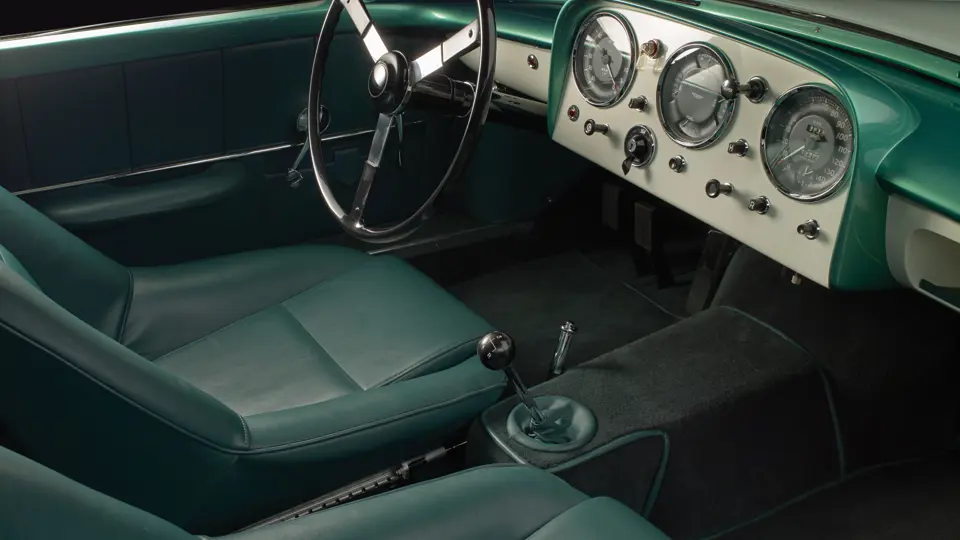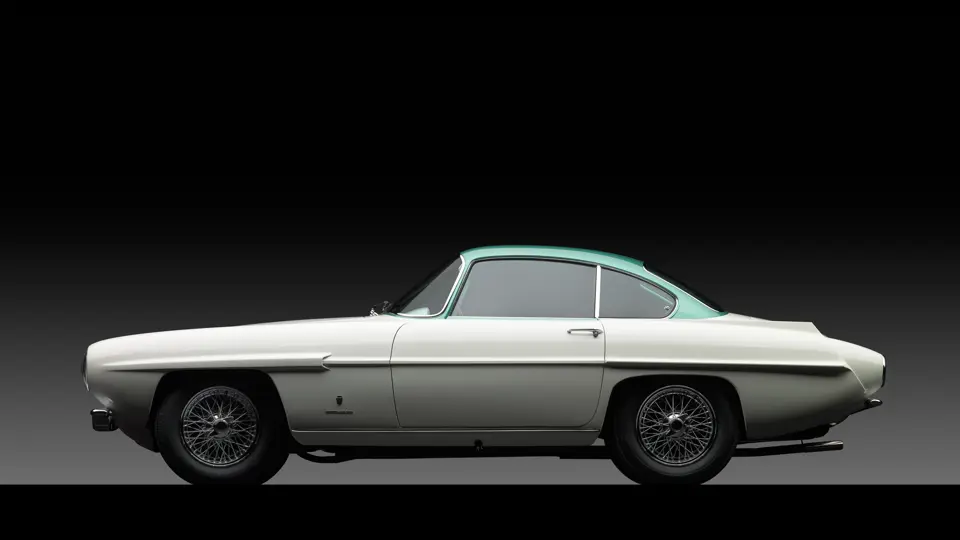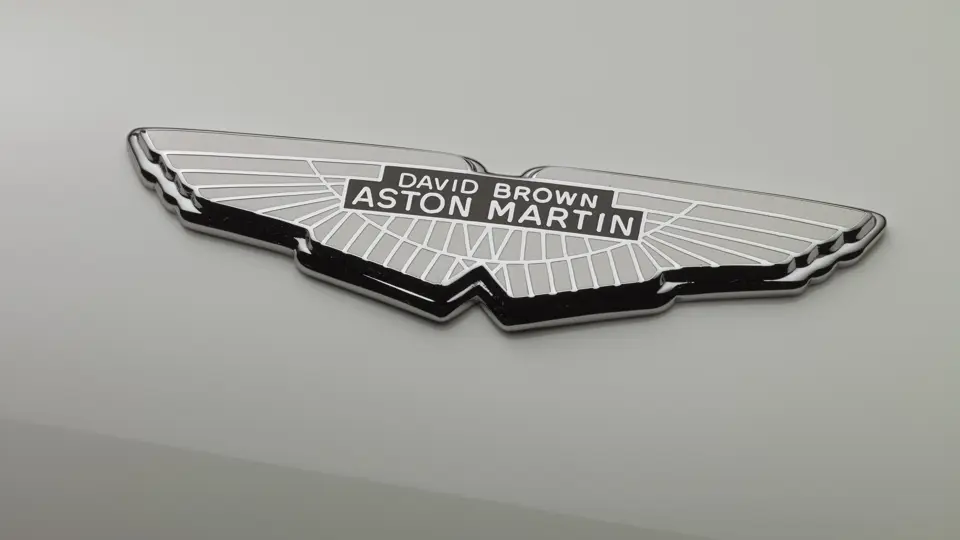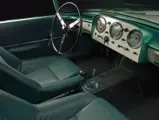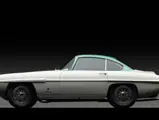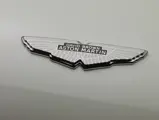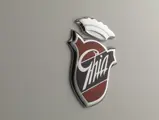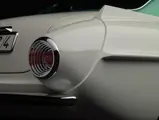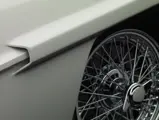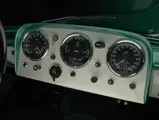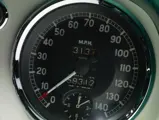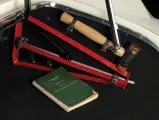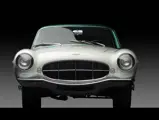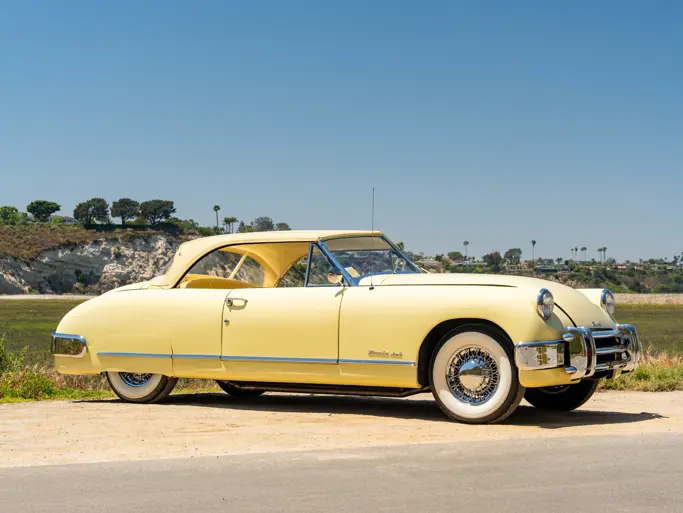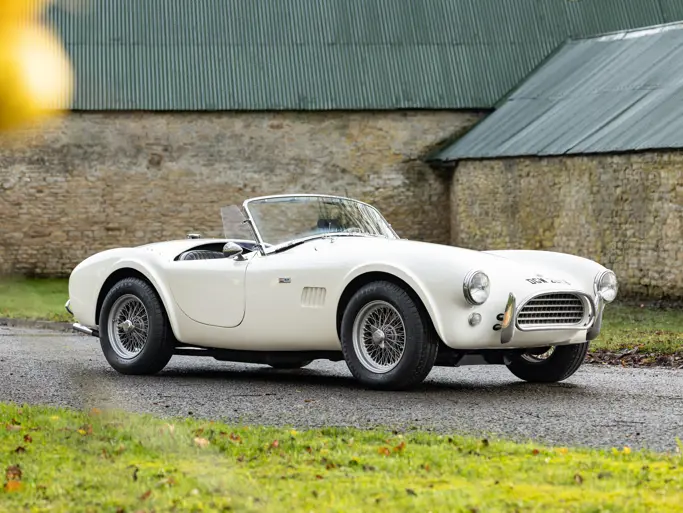

1956 Aston Martin DB2/4 Mk II ‘Supersonic’ by Ghia
{{lr.item.text}}
$2,310,000 USD | Sold
{{bidding.lot.reserveStatusFormatted}}
- The gentleman’s rocket ship
- A Space Age icon of the 1950s
- The only Supersonic built on an Aston Martin chassis
- Ex-Harry Schell, Robert M. Lee, and Richard Cowell
- Pebble Beach award-winning restoration
In 1984, Ghia’s president, D.F. Kopka, wrote of Turin that “it is a magic place. There is absolutely no other place like it on the face of the earth. Imagine having a group of descendants of Lautrec, Giotto, da Vinci, and others of that ilk all painting canvases just for you and your friends to admire in the privacy of your own home. Having Ghia SpA report to me is not that different as an analogy.” Ghia’s creative designs evoked an era of sky-soaring rockets and unlimited dreams, and they put those fantasies on the road.
Here is presented the Supersonic. It was the 15th and last of a series of unique motor cars that have been individually created by Ghia to variations on a race-bred Giovanni Savonuzzi design, and it is the only example on an Aston Martin chassis. It has been a fascinating part of fascinating lives, residing in Manhattan, in Michigan, and on a golf green by the sea.
Harry Schell was an American expatriate living in Paris who was born into the world of racing and premium sports cars. His parents, French driver Laurie Schell and American privateer Lucy O’Reilly, had founded the Ecurie Bleue team for which Rene Dreyfus famously campaigned Delahayes against the finest Bugattis and Mercedes-Benz of the late 1930s.
Despite the death of his father behind the wheel during a road outing, the younger Schell was bitten by the racing bug, and through the 1950s, he competed in grand prix racing with a variety of makes, including Talbot-Lago, Maserati, Gordini, and Vanwal. Schell was a regular on the grand prix circuit of the 1950s, but he was also known to keep a variety of exceptional personal cars.
Coachbuilt sports cars of this period were, of course, not entirely uncommon, but there were relatively few Aston Martins of the period that were constructed with non-factory bodywork. Unfortunately, very little reliable documentation exists regarding the finer details of the Supersonic production run, as recordkeeping at Aston Martin and Ghia was lamentably vague. The first known photograph of this extraordinary Aston Martin Supersonic was taken at the car’s show debut at the Turin Auto Salon on April 21, 1956. The car was displayed there alongside one of the first examples of the Dual-Ghia, the exclusive American luxury car that was just entering production. It is believed that Harry Schell was subsequently presented with the car on loan directly from Aston Martin, with the intention of engendering additional publicity, particularly since he was a racing driver of some renown.
In execution, it is interesting to note how successfully the Supersonic coachwork was grafted to Aston’s powerful but roomier DB2/4, which substituted a 2+2 seating arrangement for the prior DB2’s smaller two-seat interior. Provided with a slightly longer chassis than the Otto Vu Fiats with which Ghia had surely grown comfortable, the coachbuilders were able to endow Savonuzzi’s design with a slightly taller profile in the characteristic lightweight aluminum. (Early press descriptions of the Aston being bodied in fiberglass are actually incorrect.) Furthermore, the Aston Supersonic’s body is distinguished from its siblings by the presence of a unique front bumper—a delicately curved piece that seems to serve as a more sculptural form than safety function.
The next known photograph of this Supersonic was taken at Spa, during the week of the Belgian Grand Prix, which took place on June 3, 1956. Harry Schell took 4th place while competing for Vanwal that weekend, but it would appear that his personal transport to the race was the new Aston Martin. As detailed in the June 15, 1956, issue of Autosport magazine, Schell’s car was parked on the streets of Spa, with a second close-up photo and caption focusing on the unusual front bumper.
The following October, the Supersonic was depicted in the October 1956 issue of Quattroruote, the Italian motoring magazine. In an article regarding the personal cars of Formula One drivers, including Juan Manual Fangio and Peter Collins, Harry Schell is seen stepping out of the Aston Supersonic with the door open, further demonstrating his early connection with the car.
By 1957, it is known that the car had been acquired by Robert M. Lee, the decorated sportsman, conservationist, and collector who has since won Best of Show at the Pebble Beach Concours d’Elegance. The young Lee was pictured outside the popular Harwyn Club in Manhattan with the car.
Mr. Lee, however, did not own the car for very long, as he sold it to a friend of his, Richard Cowell, also of New York, in late 1957 or 1958. Mr. Cowell, heir to an oil fortune, was about 30 years old at the time, and he would be featured in February of the following year in a four-page article in LIFE magazine that regarded his highly publicized and newsworthy marriage to Gail Vanderbilt Whitney, daughter of Cornelius Vanderbilt Whitney, whom Cowell had met in her father’s opera box. Quite amazingly, the article not only pictures the happy young couple, but also the Aston Martin, which Cowell gifted to his lovely bride, along with an eight-carat engagement ring and a Fifth Avenue mansion.
The couple, but Gail specifically, drove the car around New York for some time, and the car was photographed while in their ownership. In fact, although Aston Martin records are very limited, as might be expected of such a one-off project, the factory does retain service records of the car in period, clearly confirming Mr. Cowell’s ownership of the car and his Fifth Avenue address.
Mr. Cowell went on to lead an extraordinary life. He was a fixture in Southern France in the 1950s, following his U.S. national water skiing team debut in 1949 at the first world water skiing competition in France. He held a long-distance waterskiing record along the French Riviera, and after a divorce from Whitney in 1959, he later dated such extraordinary women as Ava Gardner and Jayne Mansfield. Quite fittingly, Cowell, who bought himself a small hotel on the Riviera, befriended David Brown, of Aston Martin, who entertained many friends and colleagues on his yacht in France, and whom Cowell would frequently entertain by waterskiing around the vessel.
The list of luminaries of this exceptional Aston Martin continued. Following Cowell’s divorce from Whitney in 1959, the Supersonic was acquired by Bob Grossman, the well-known Ferrari sports car driver who carved a reputation in Maranello’s Spider California. The Aston Martin successively passed to owners Fred Benson and then Arnie O’Brien, remaining in the Detroit region, where it eventually was parked at an abandoned gas station.
In 1974, the car was discovered at the old filling station around Detroit’s Nine Mile Road by 21-year-old Brian Joseph, an enthusiast who would soon enjoy a budding restoration career. As unfamiliar with the car as most people at that time were, Mr. Joseph giddily recognized the Aston Martin badge and knew that the car he had found was certainly something quite special. Mr. Joseph took photographs of the Supersonic and returned occasionally to admire it, until, on one such occasion, the car had vanished.
By late 2003, Mr. Joseph was informed of the car’s whereabouts, as it resided with one Bill Mains, of Toledo, Ohio, from whom he acquired the car after re-discovering it some 30 years after he first laid eyes on it.
The restoration of such a unique, one-off car was carried out with no expense spared and while in the ownership of the consignor, a highly respected collector and former Pebble Beach Best of Show winner. The car was gradually disassembled, the parts were catalogued, and the utmost was done to research every available photo or article about it.
Mr. Joseph’s work war conducted with absolute attention to detail, down to the last nut and bolt.
The powerful Mk II chassis and drivetrain were completely restored to Aston Martin factory specifications, while the unique nuances of the rare Ghia coachwork were carefully refurbished, with all moldings and components restored or fabricated to optimal authenticity. The only notable deviation from the car’s original appearance was the choice of the color scheme; the car now had a green top over an ivory body, replacing the original all-white livery, and it was trimmed with a color-matched green leather interior.
Completed in early 2011, the sensational restoration debuted at that year’s Pebble Beach Concours d’Elegance, taking Second Place in the Postwar Touring Class. The following January, the Supersonic earned the Most Unique Award at the Classic Sports Sunday at Mar-a-Lago, held in conjunction with the Cavallino Classic in West Palm Beach, Florida. The car’s overwhelming authenticity and rarity were further recognized in July 2012 at the Concours d’Elegance of America, which took place at St. Johns in Michigan.
Now publicly offered in pristine condition for the first time in many decades, this breathtaking, one-off Aston Martin offers serious cachet for collectors of coachbuilt post-war sports cars, Aston Martin enthusiasts, or Ghia devotees. The car is the only example built on an Aston Martin chassis, endowing it with completely unique physical dimensions and design characteristics. Certain to continue to command respect on the world’s finest show fields, and worthy of exhibit in museums, this remarkable car will forever hold fascination as the final chapter of the Supersonic legend, and it claims connections to such iconic figures as Harry Schell and the Vanderbilt family. It is one of but a handful of one-off DB2/4 Mk II examples, and it promises to comfortably join the most pedigreed collections of first-class coachbuilt European sports cars.

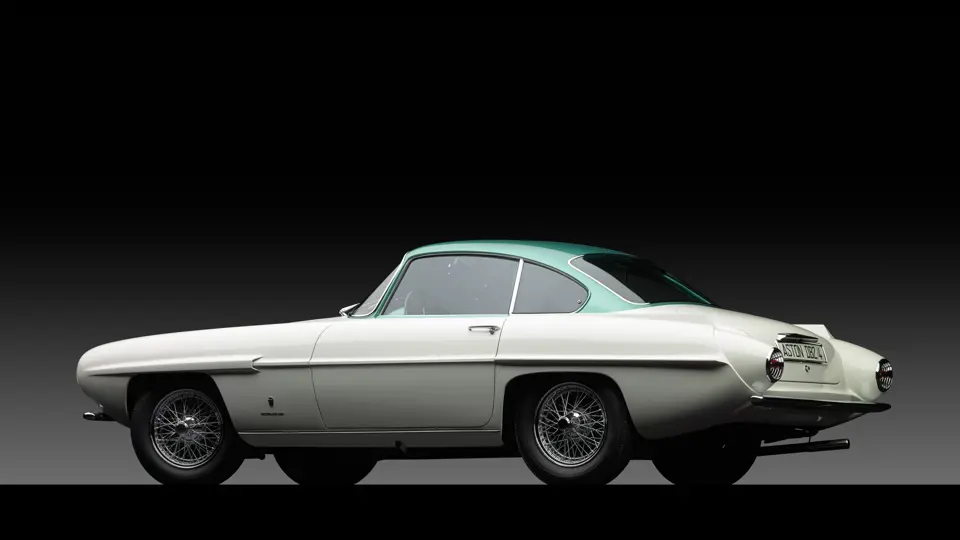


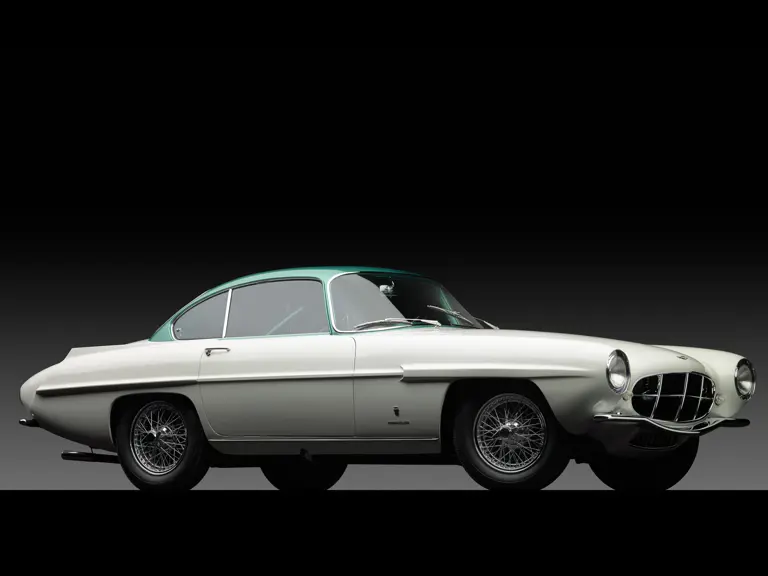
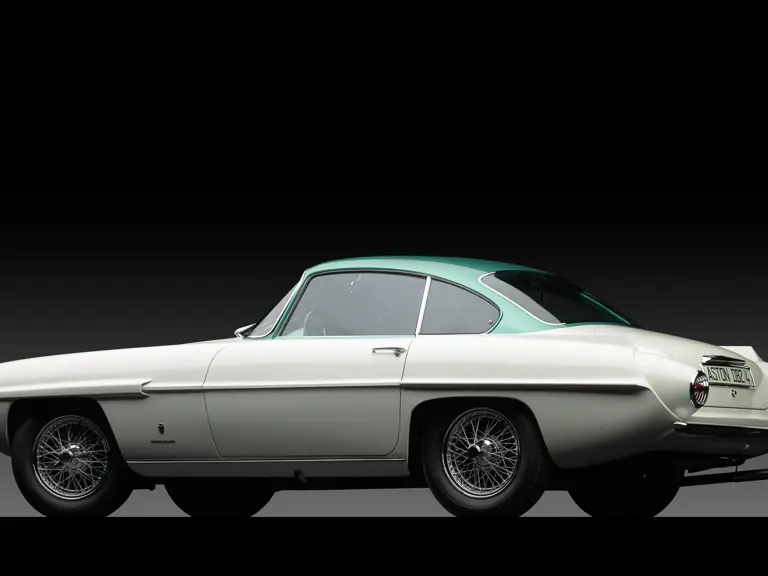

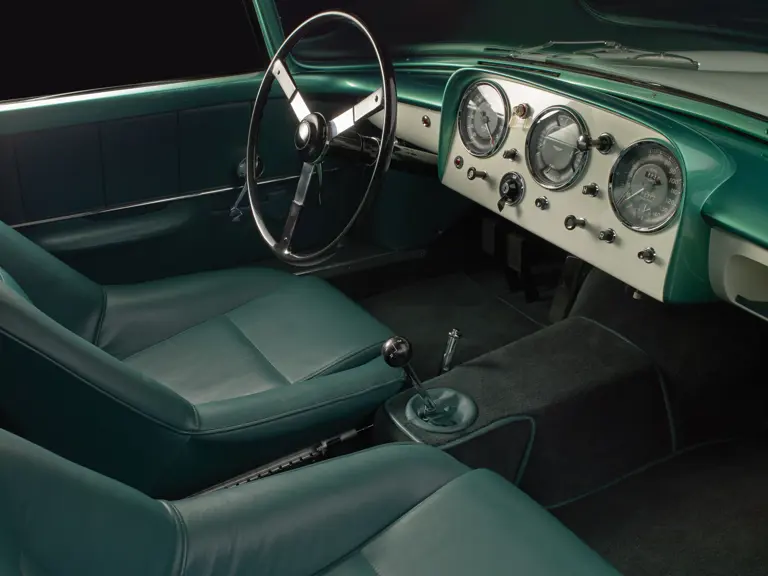
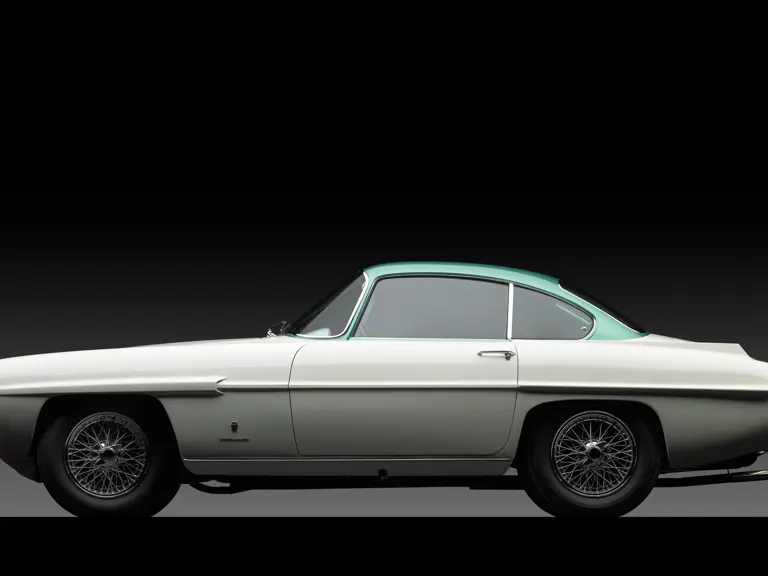
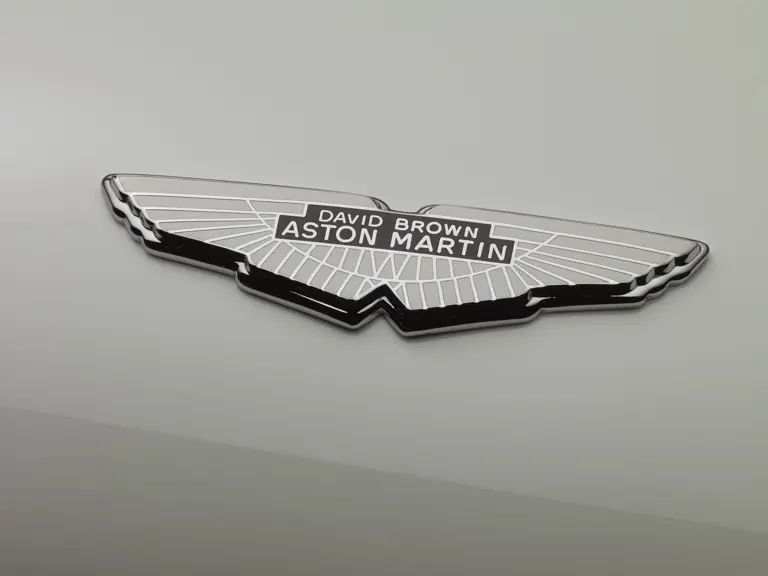
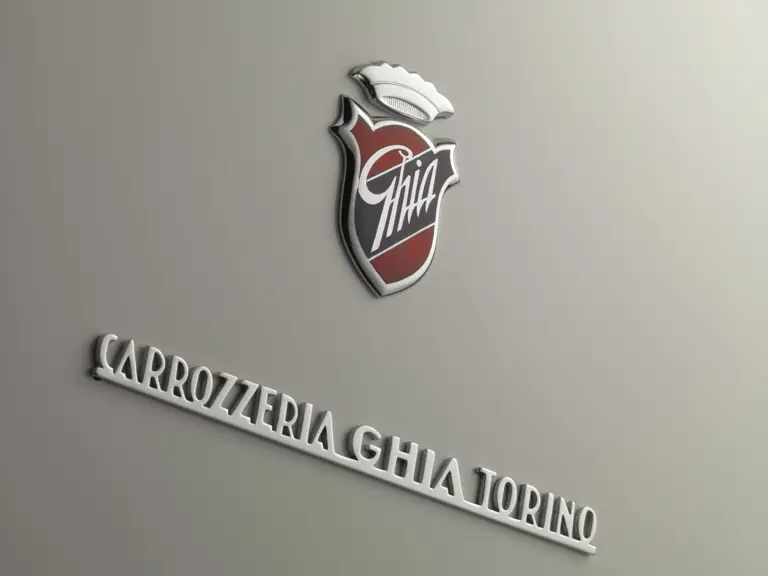
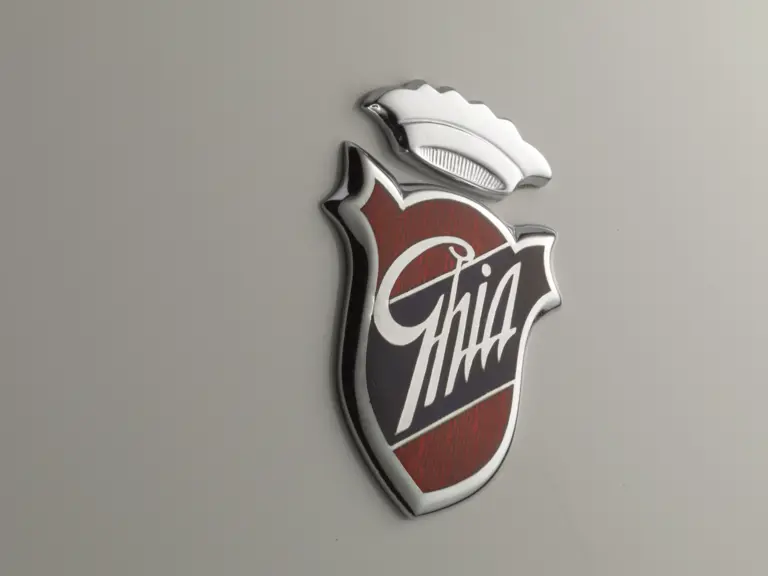
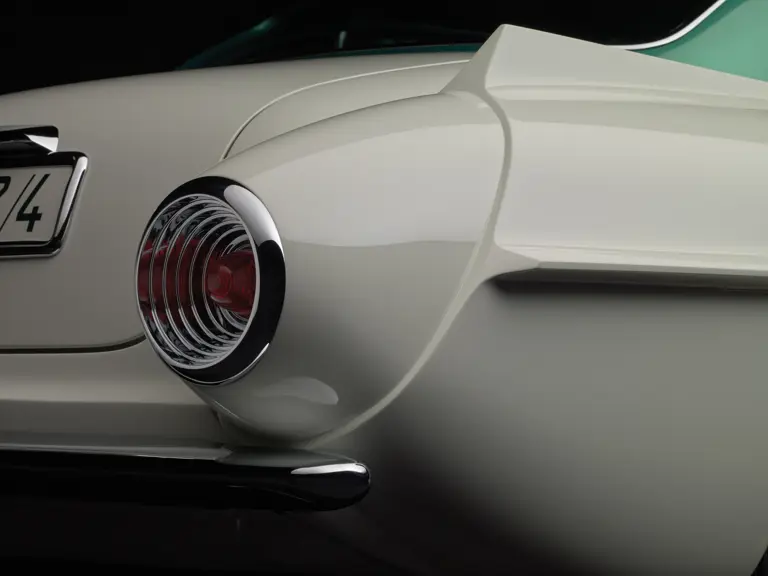


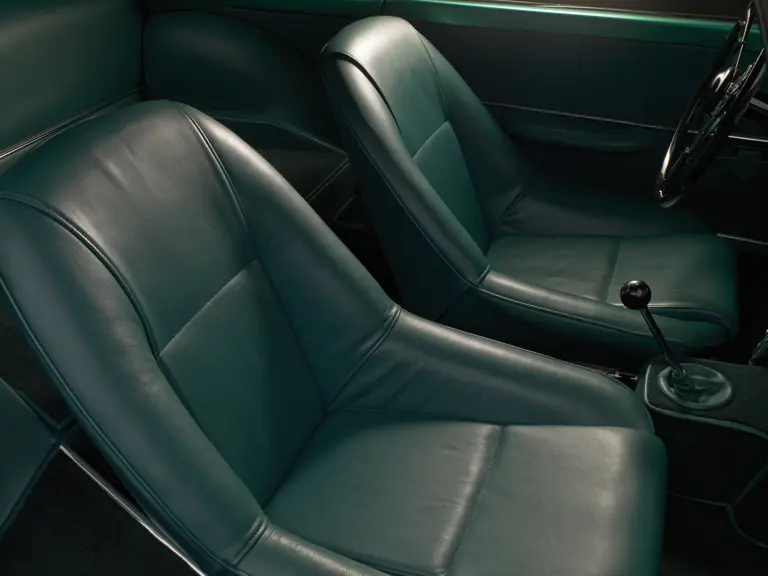
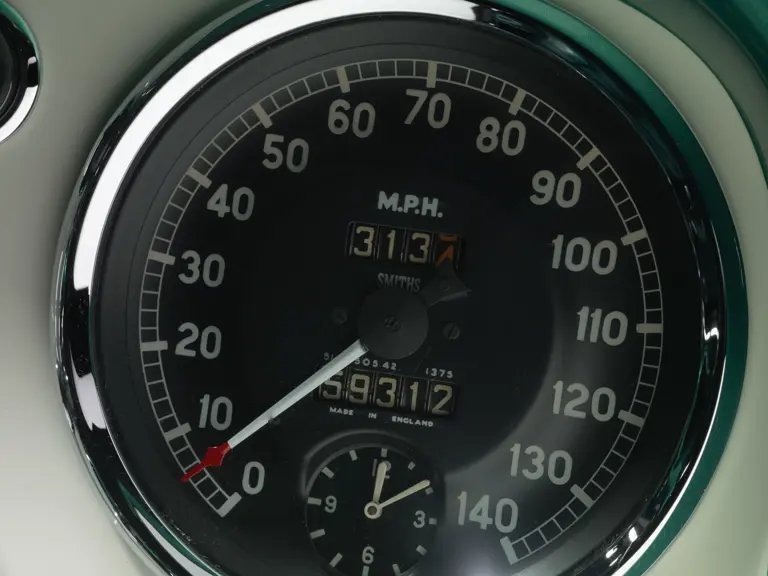
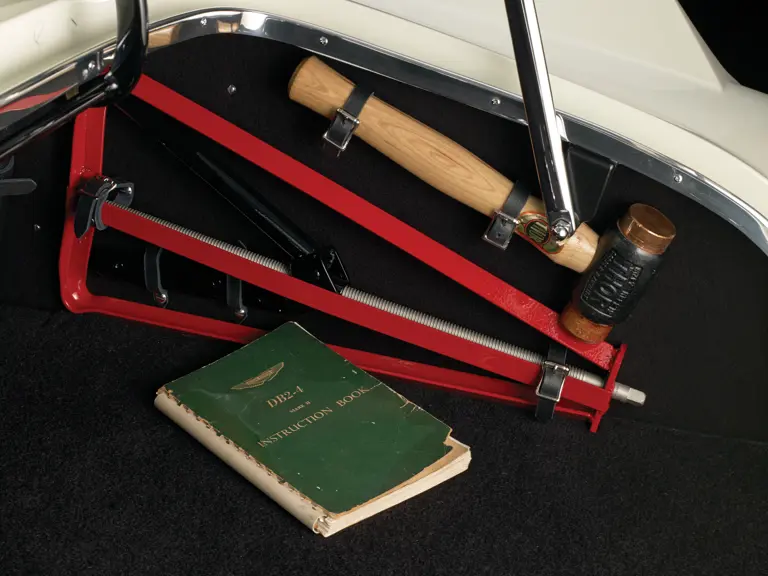


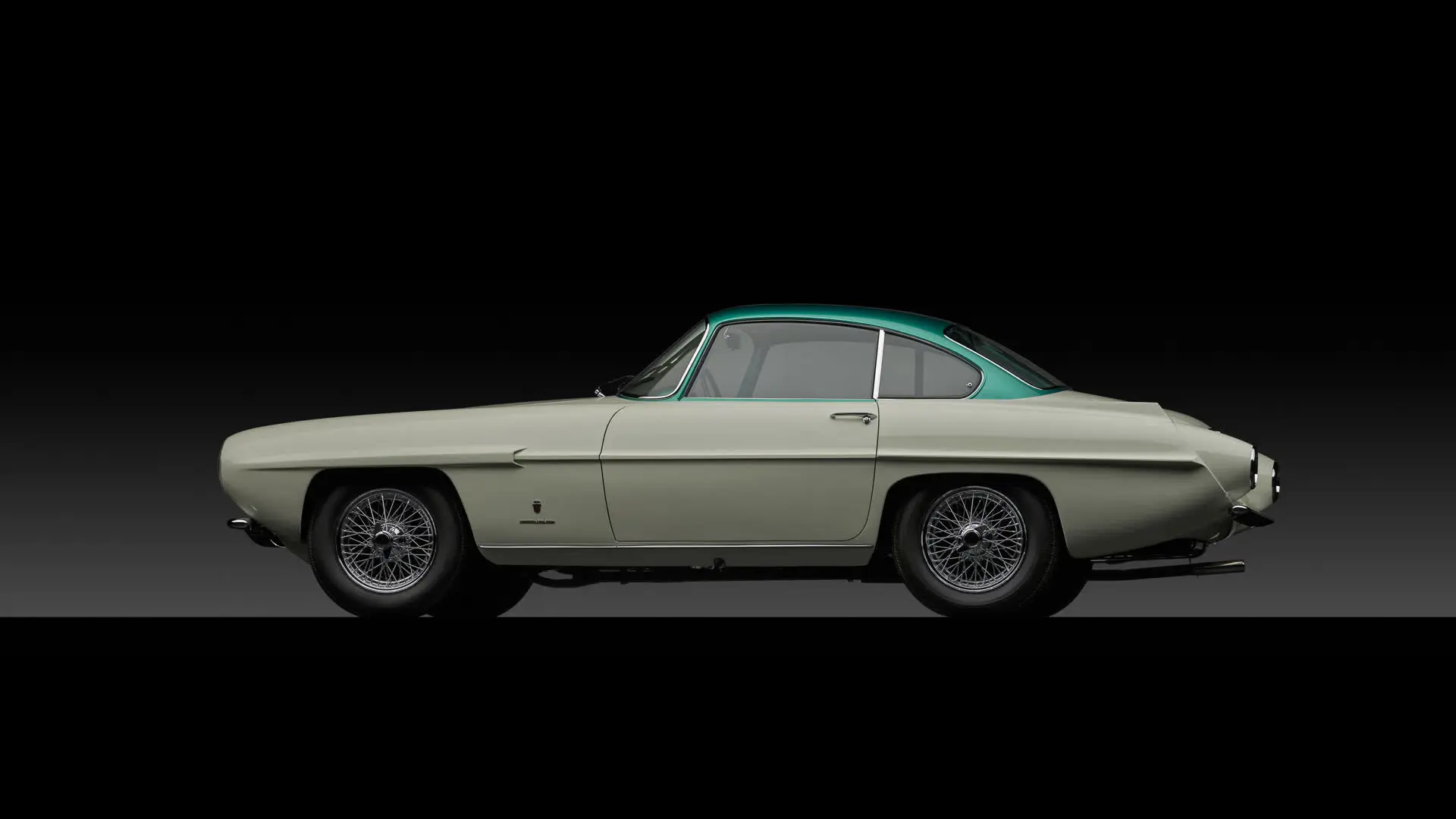
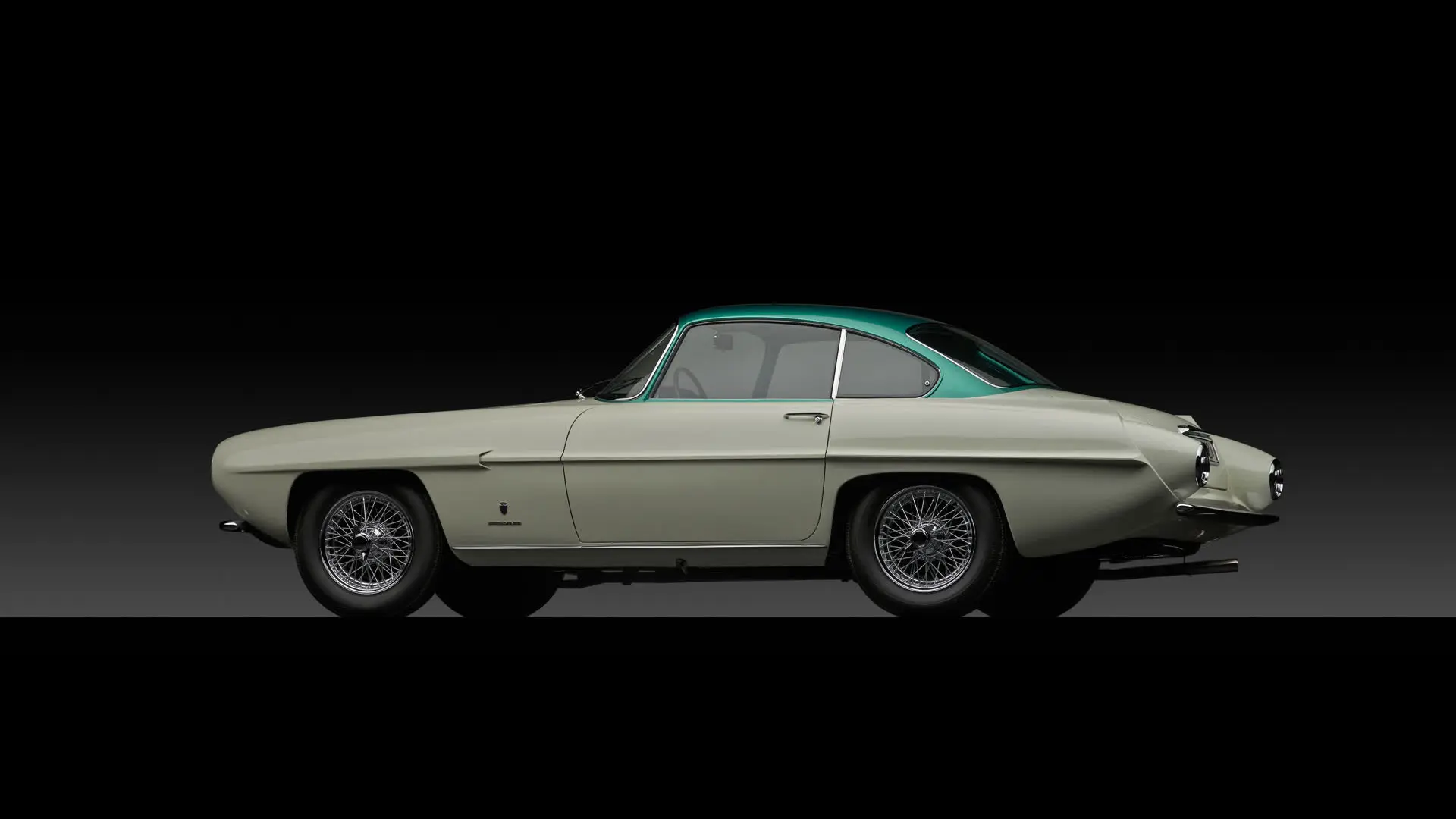
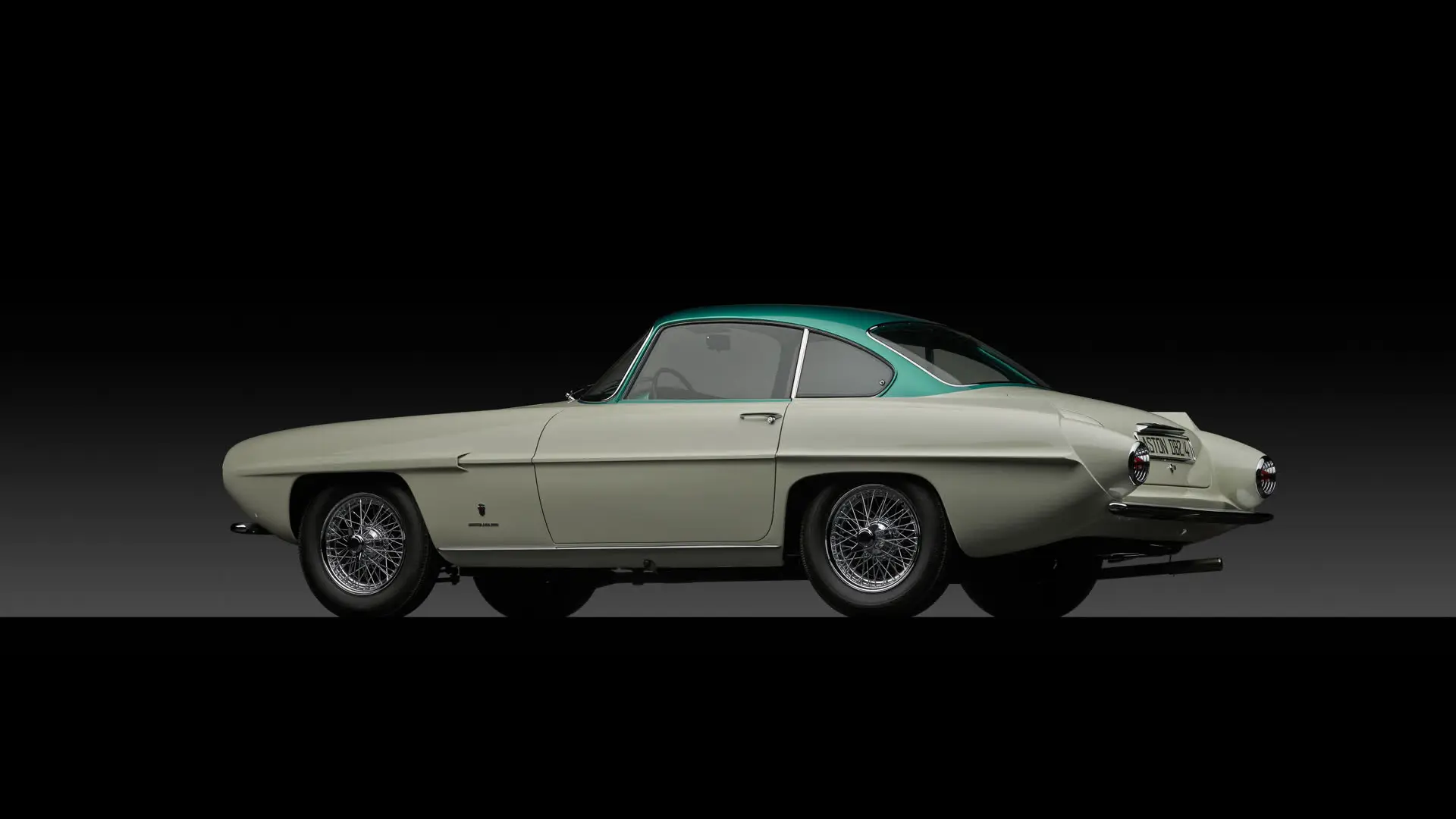
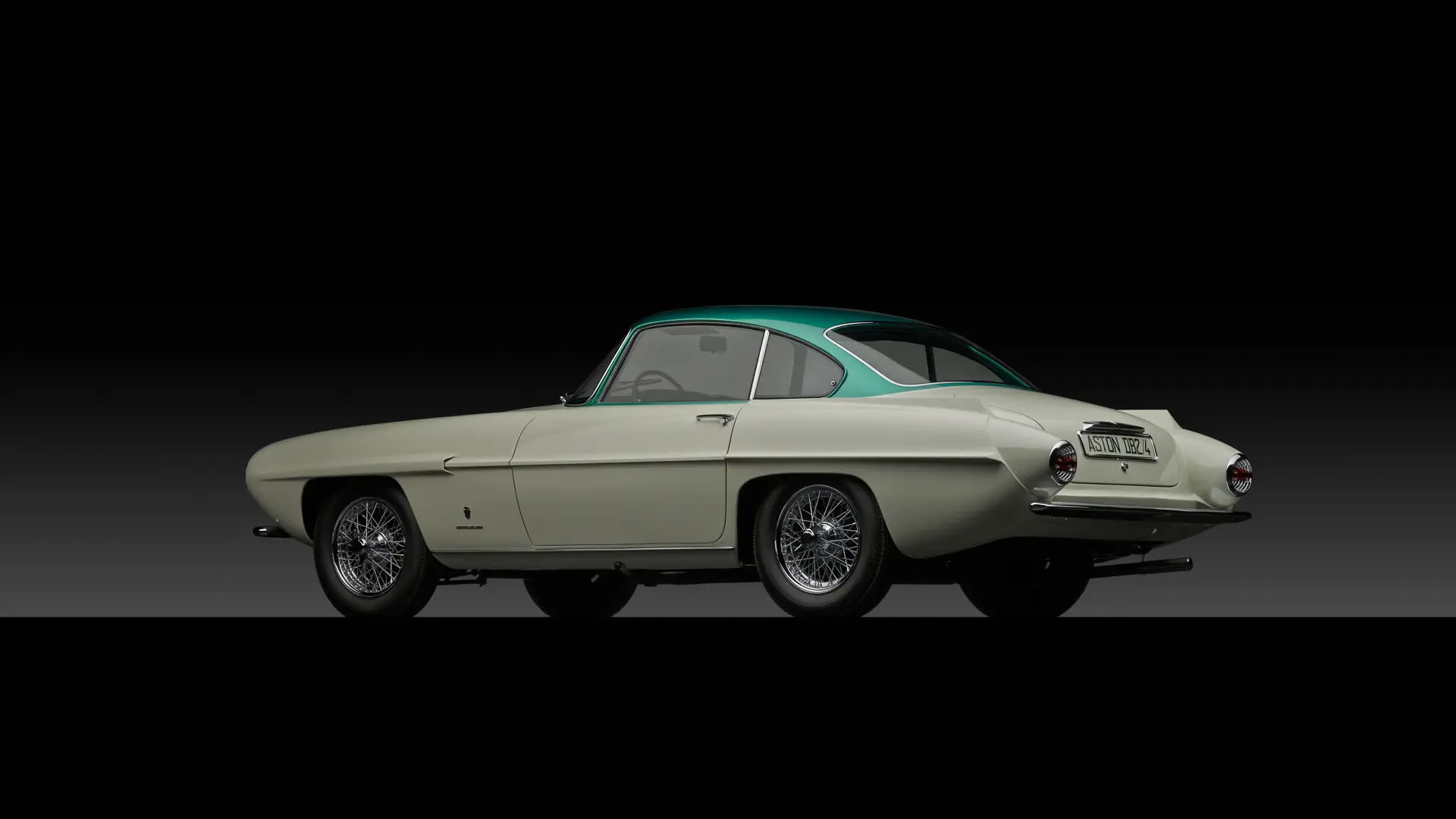
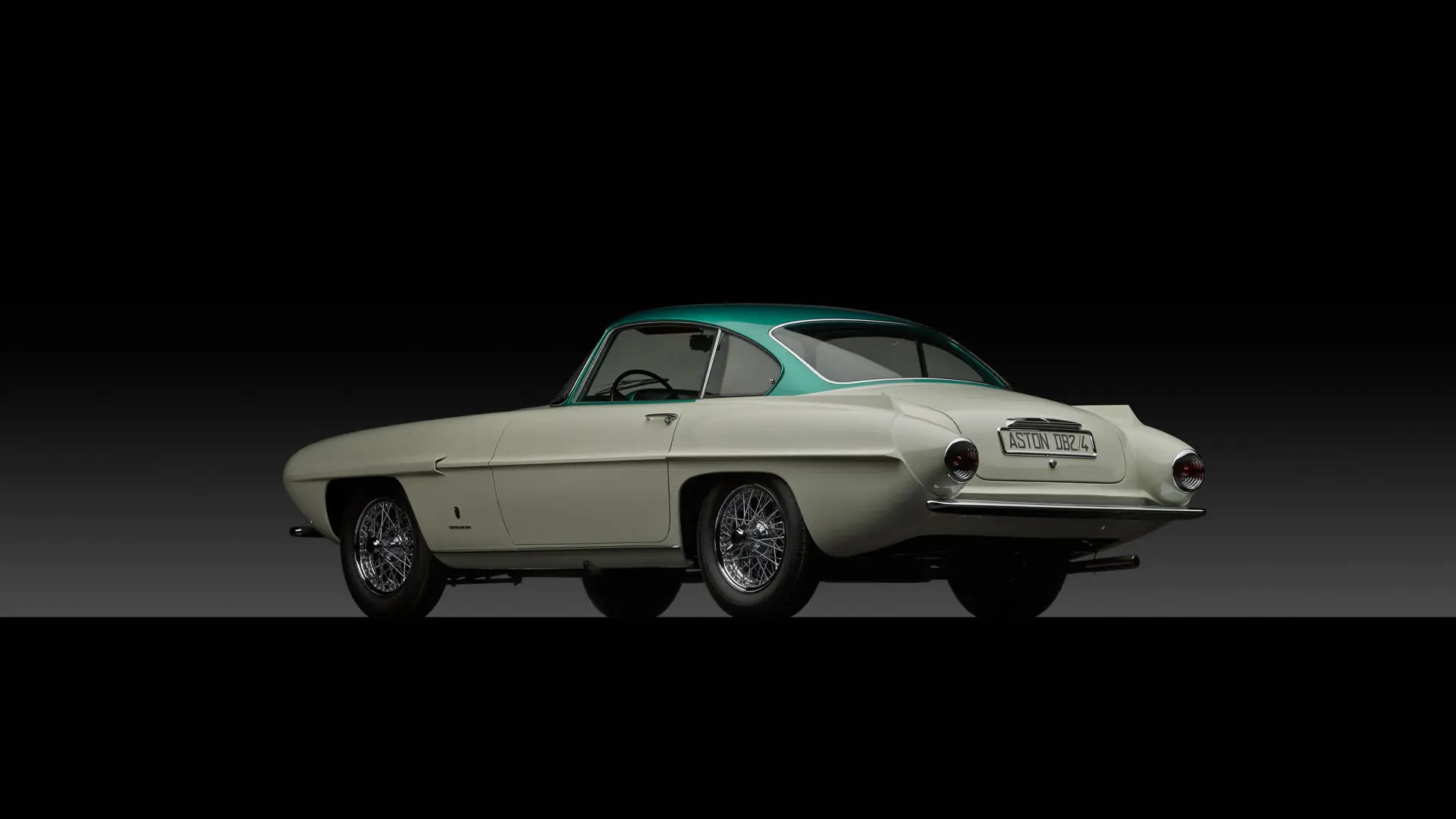
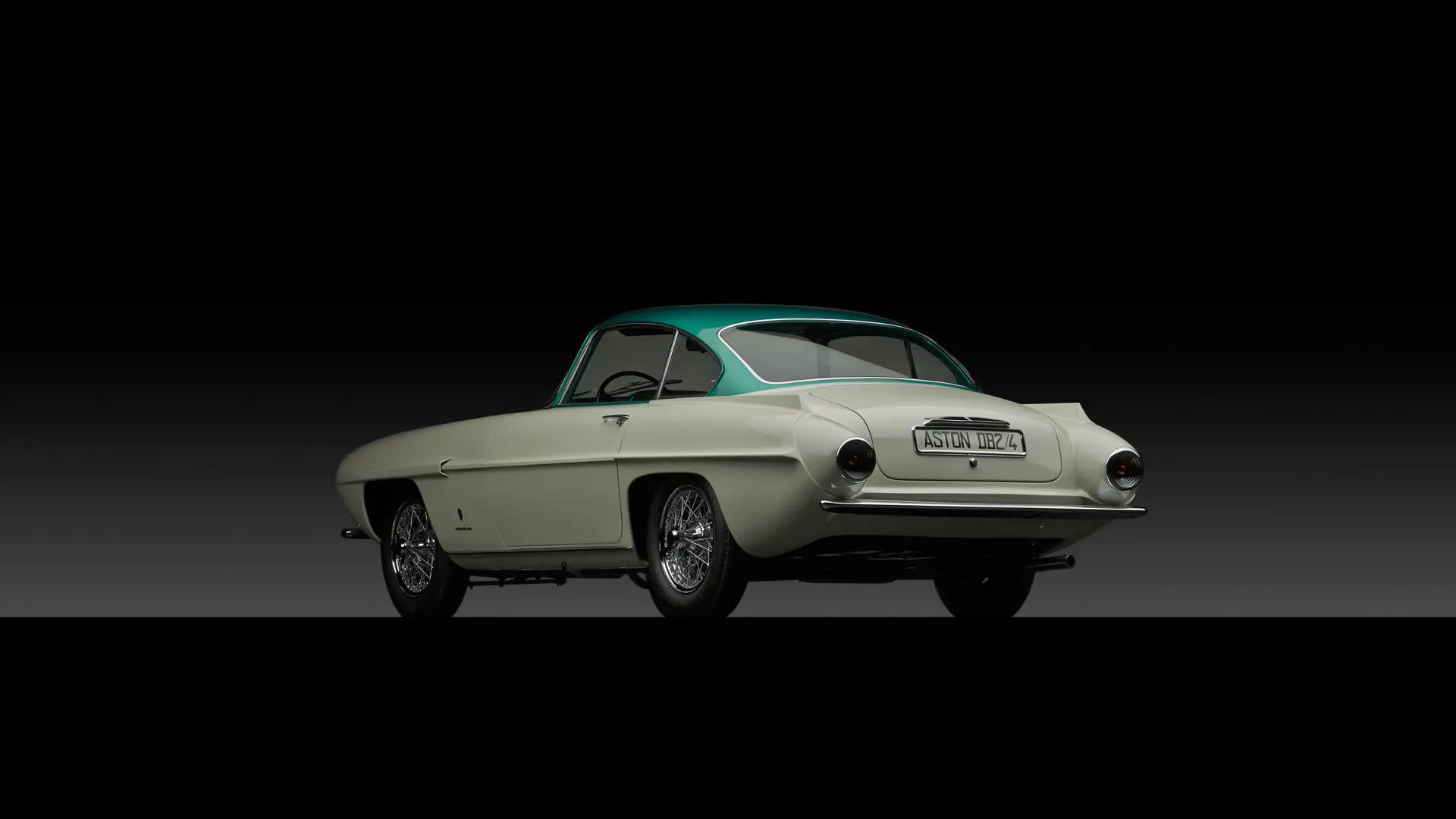
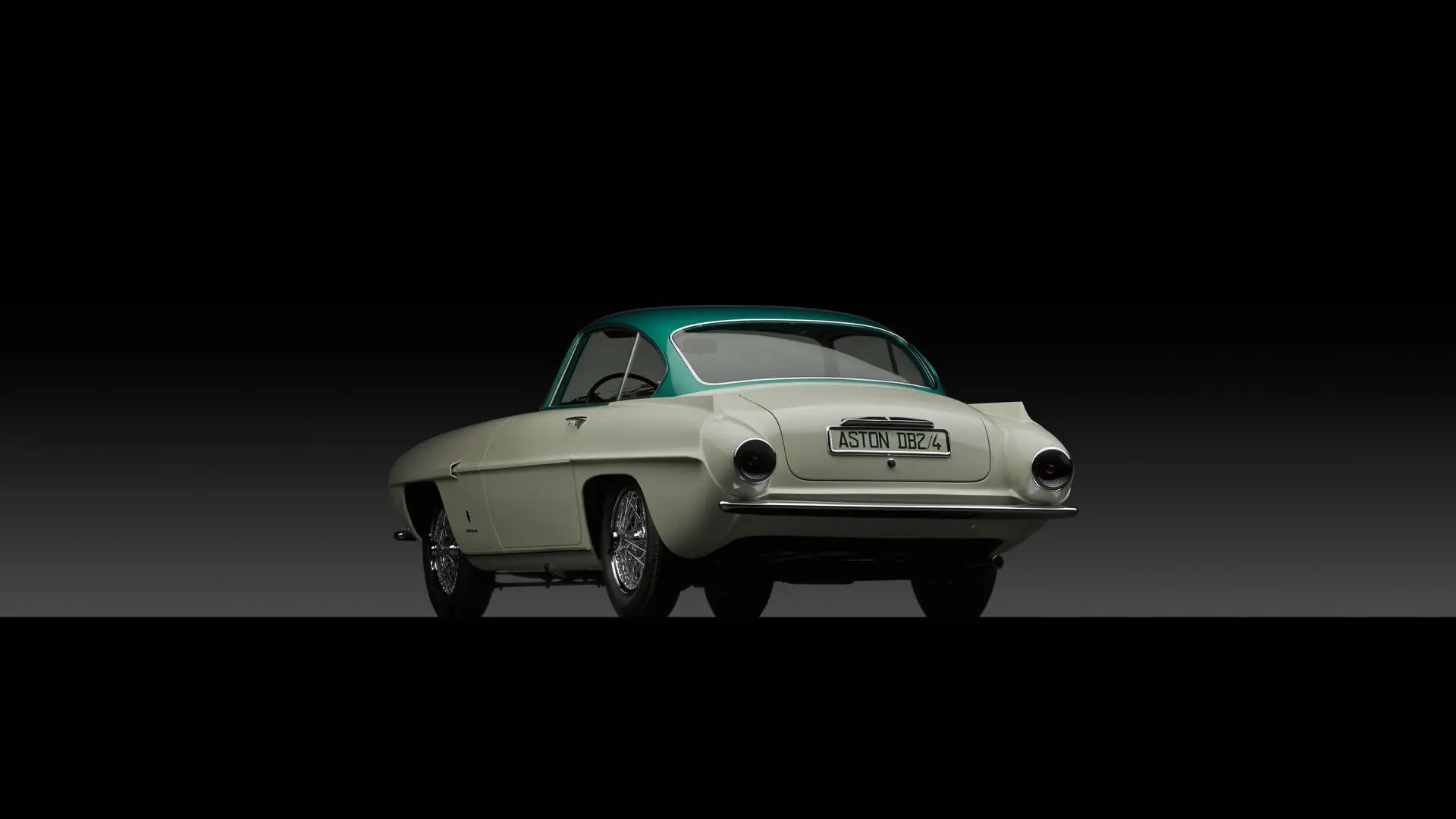

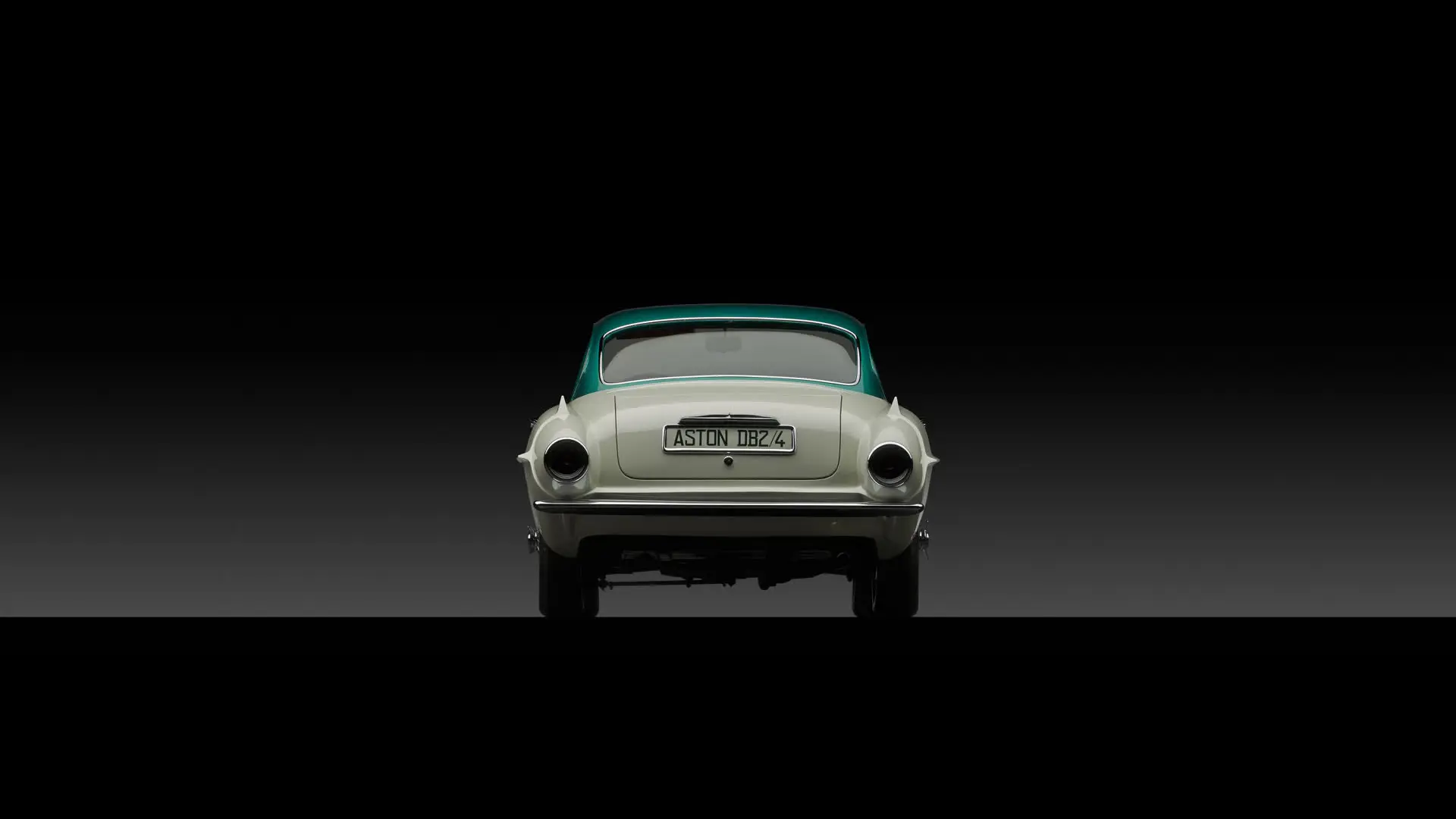
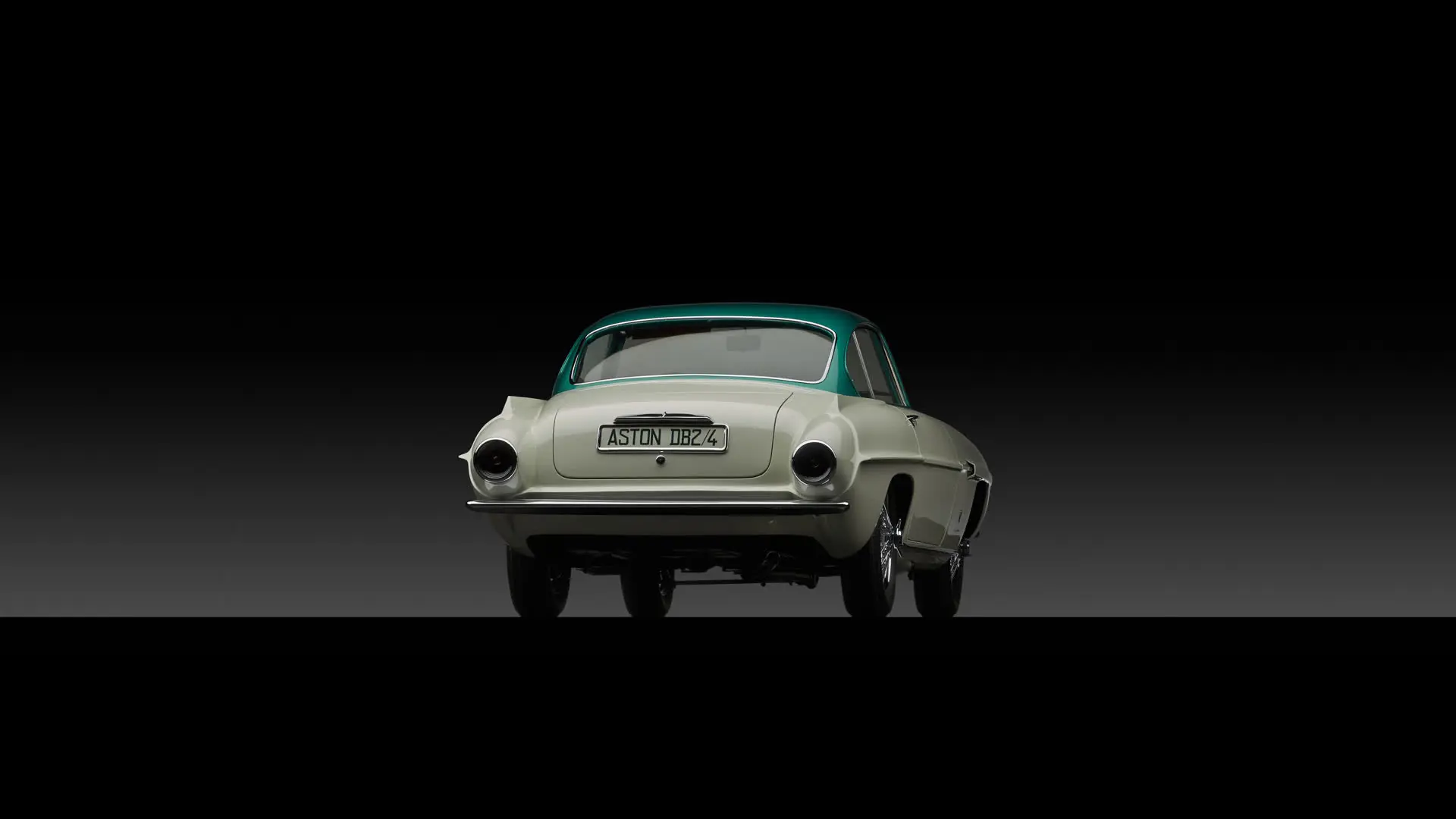
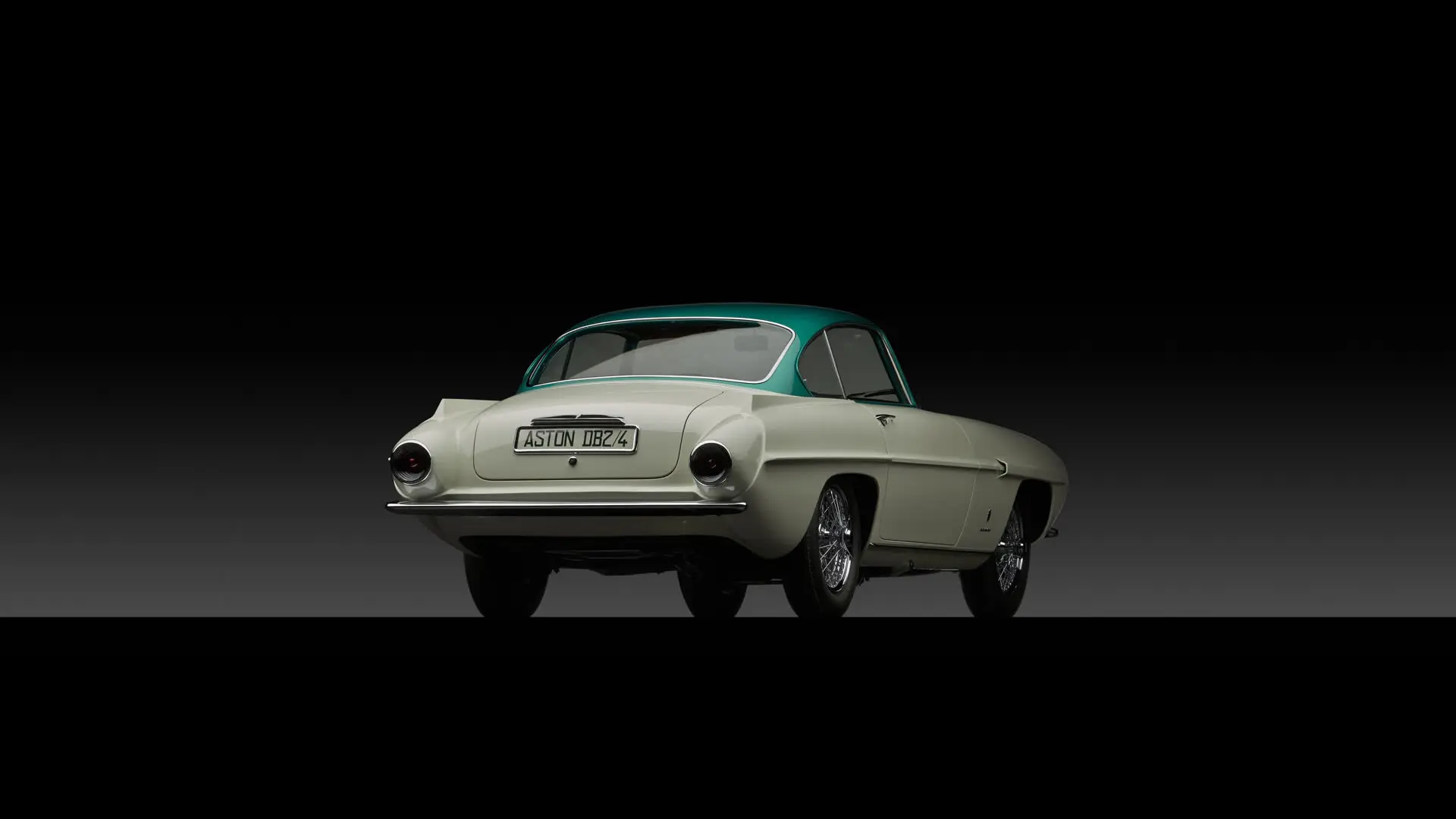
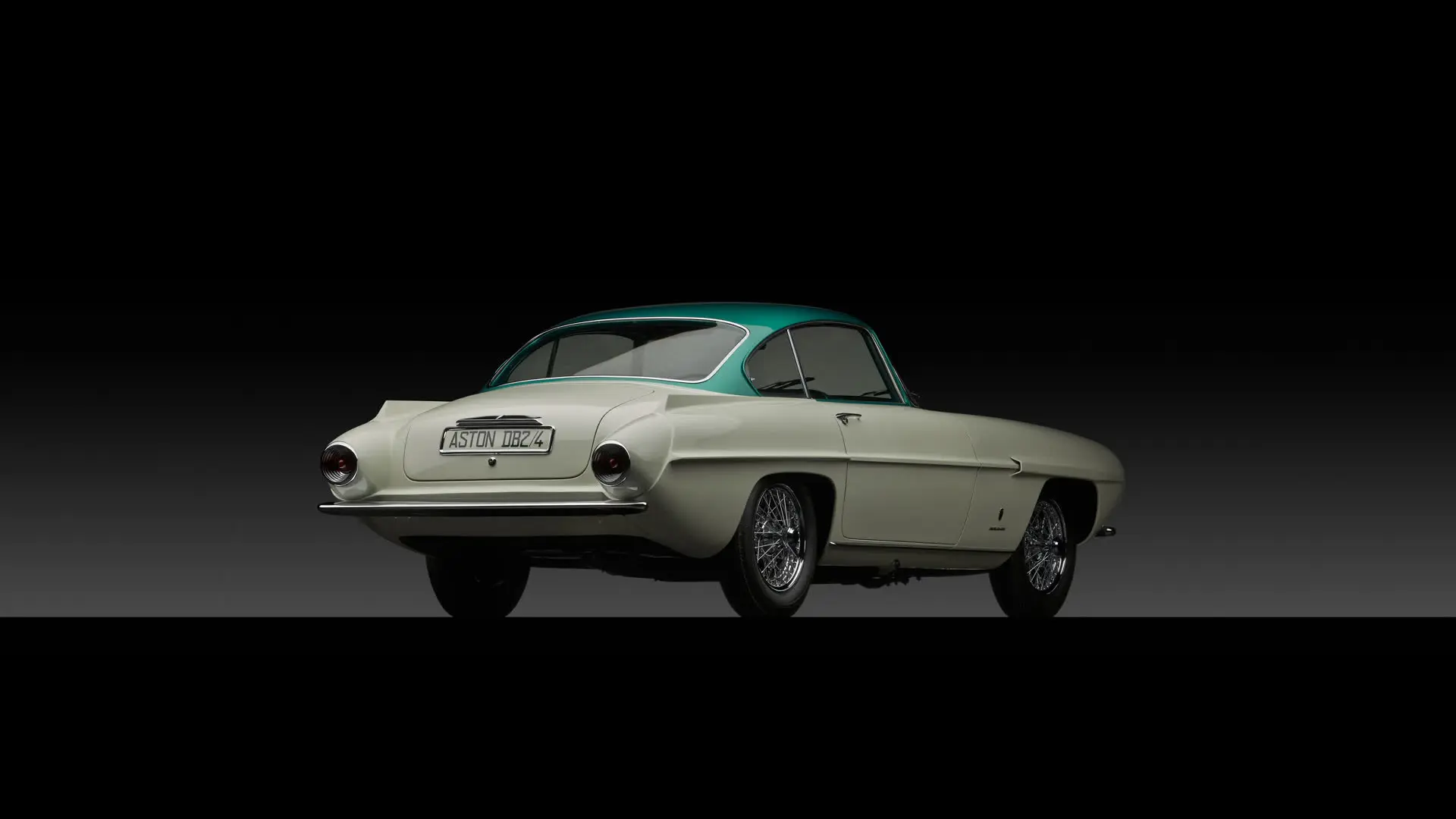

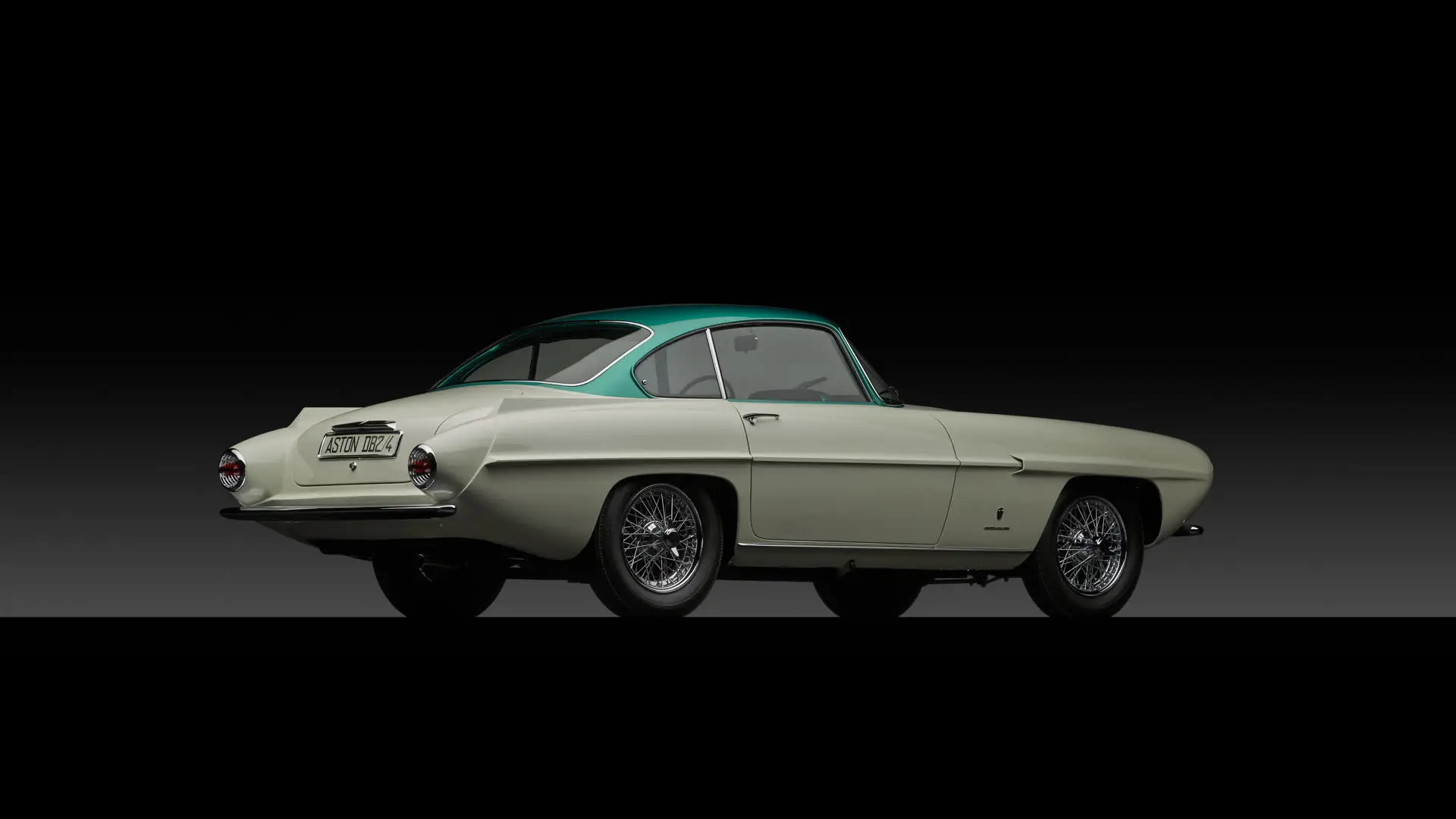
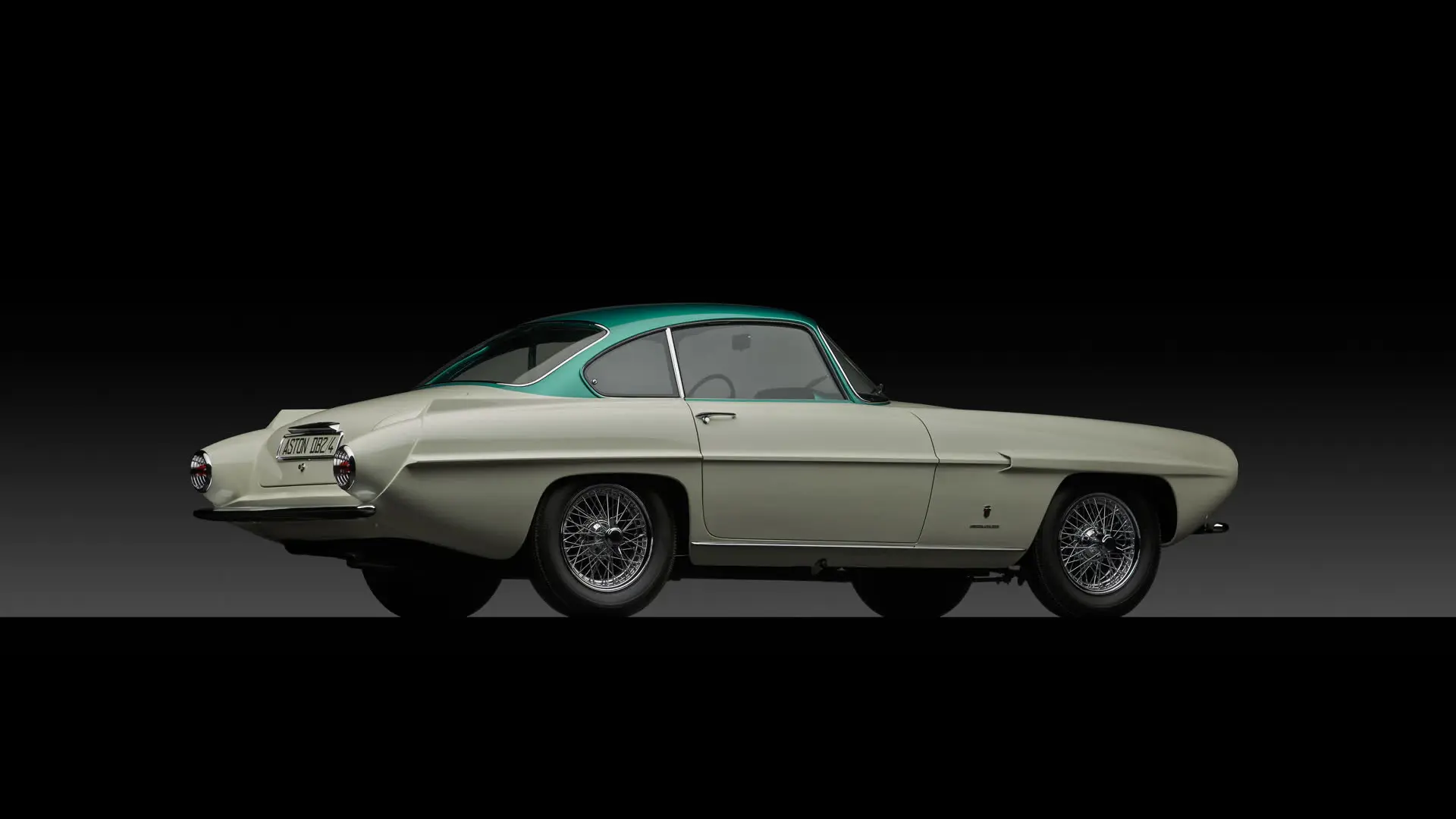

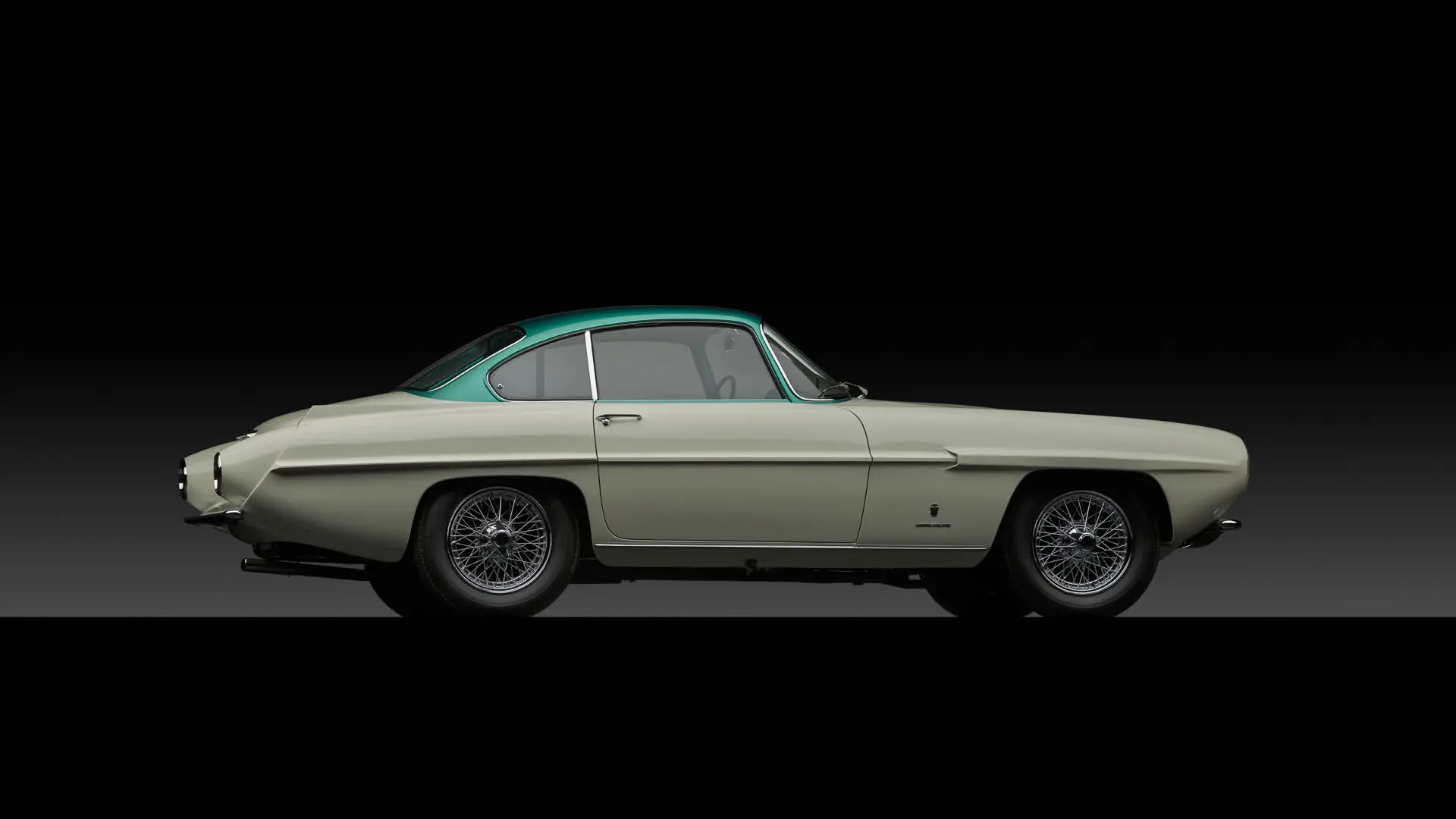
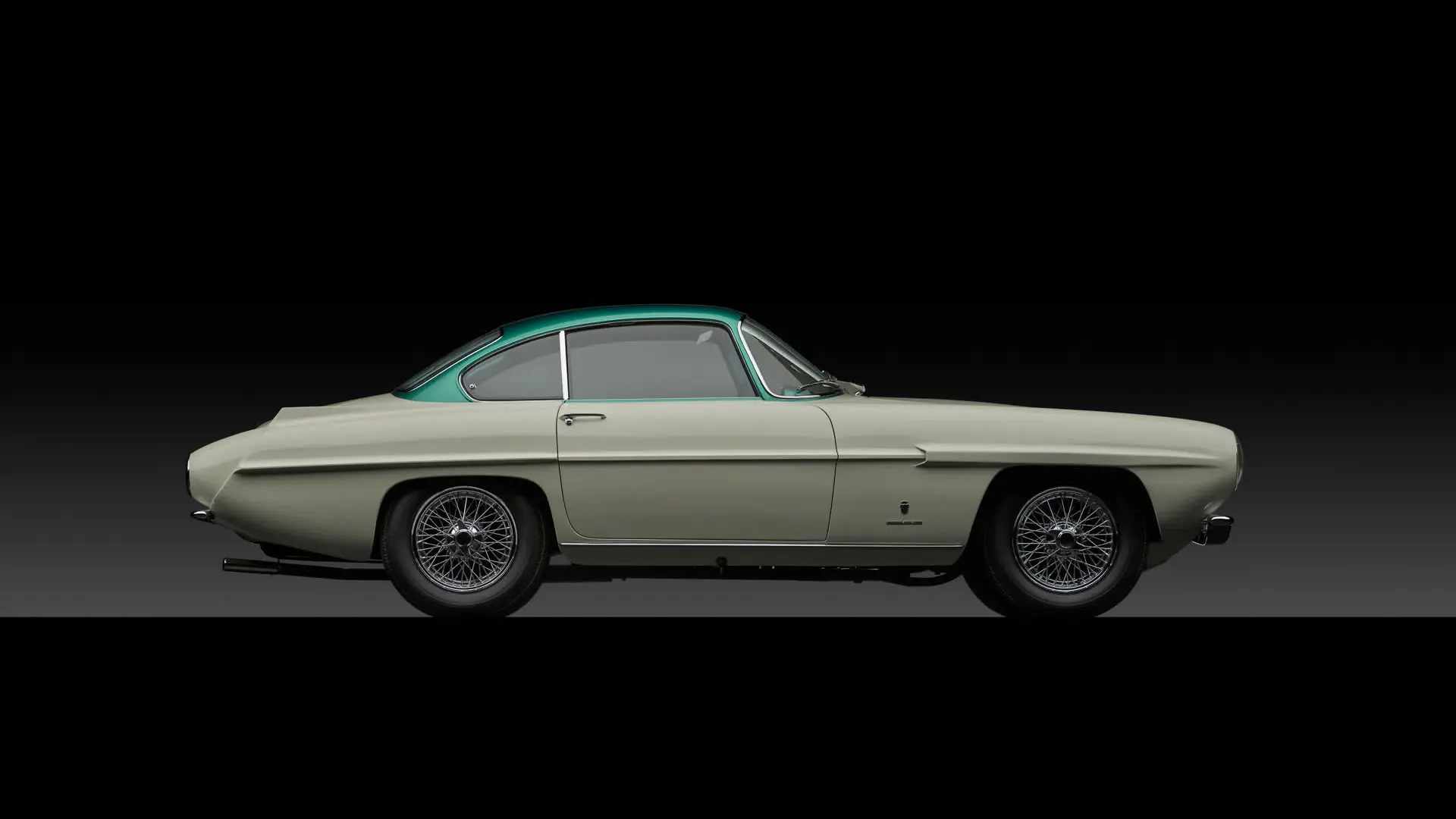
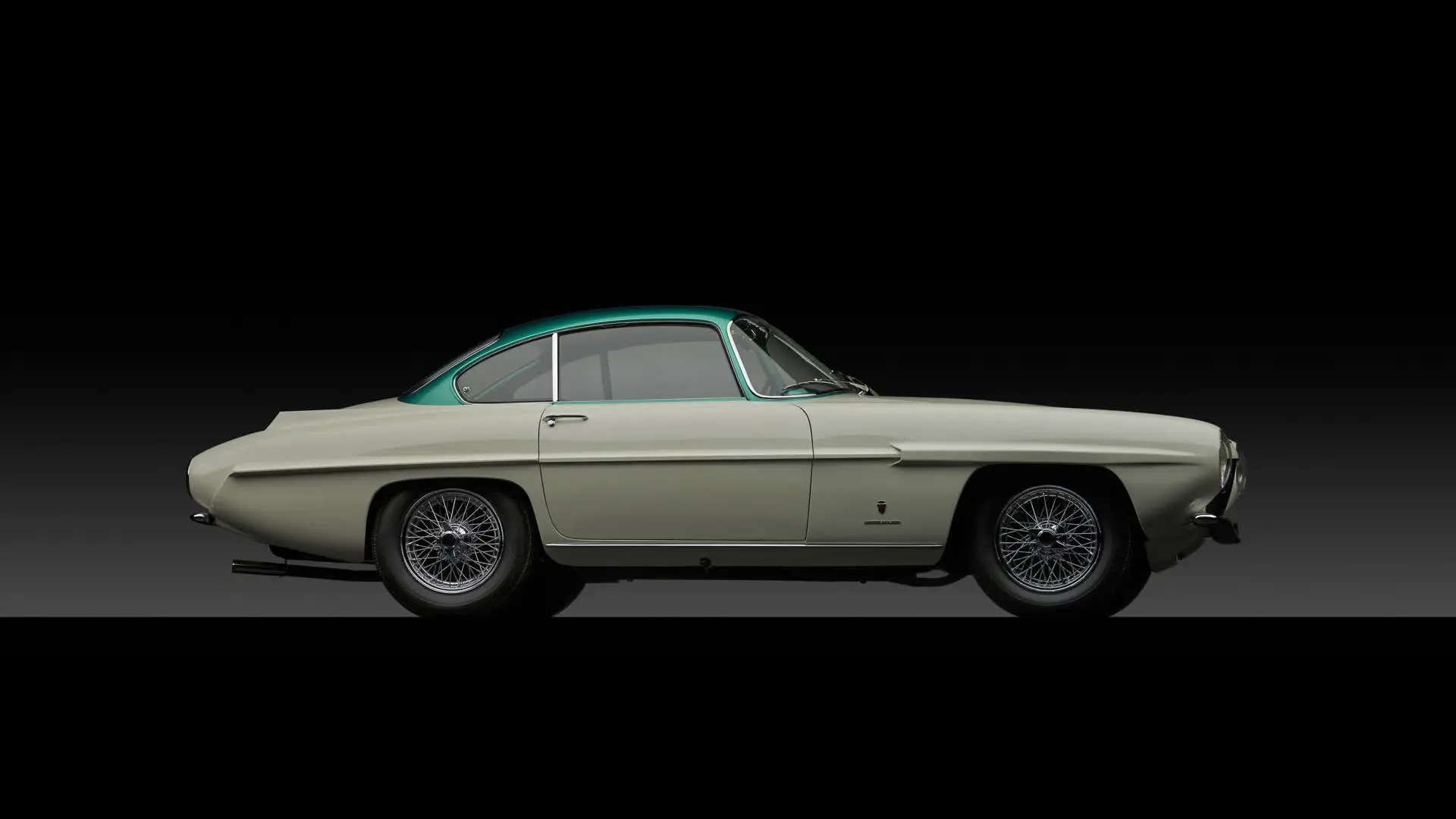

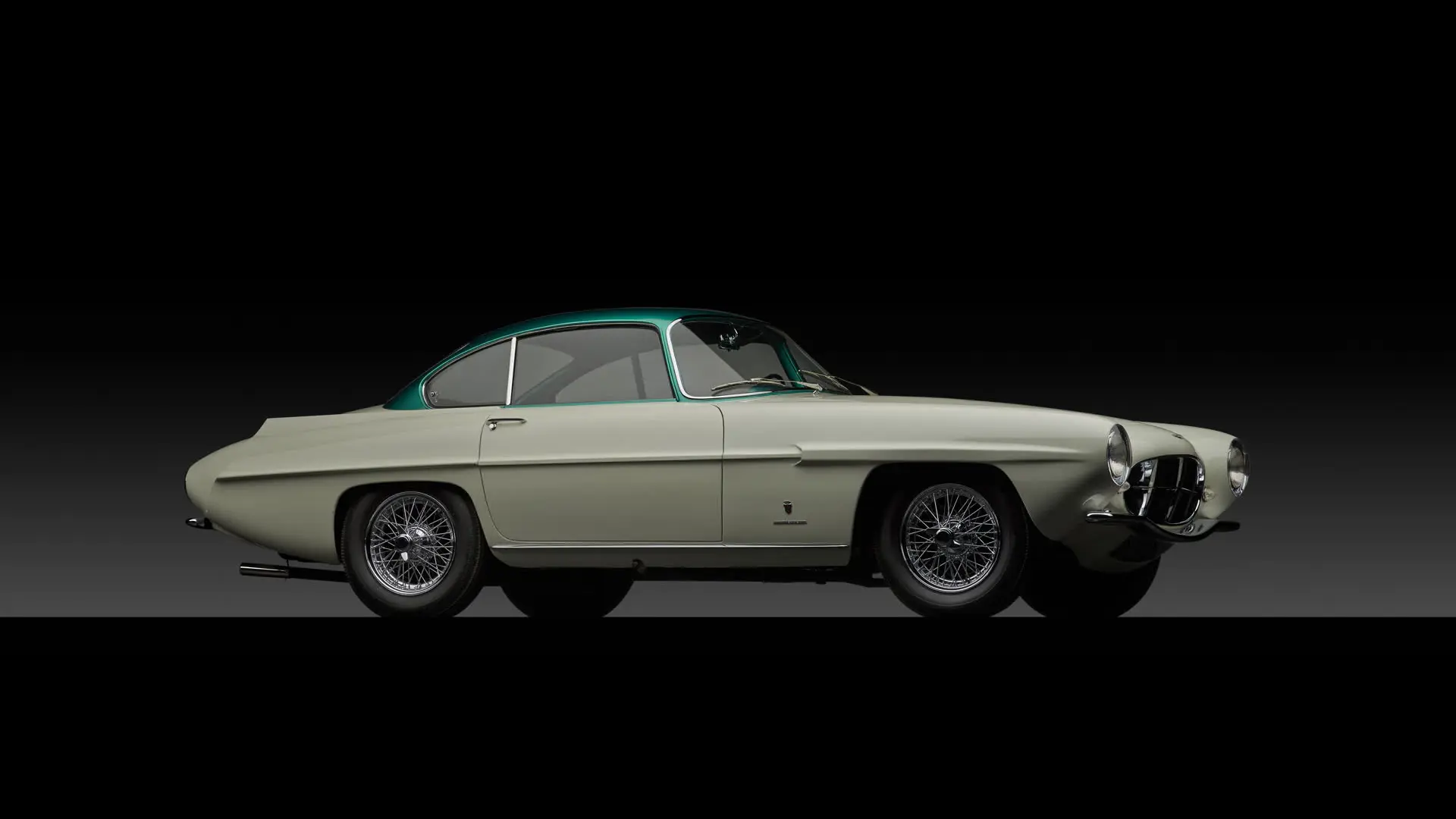
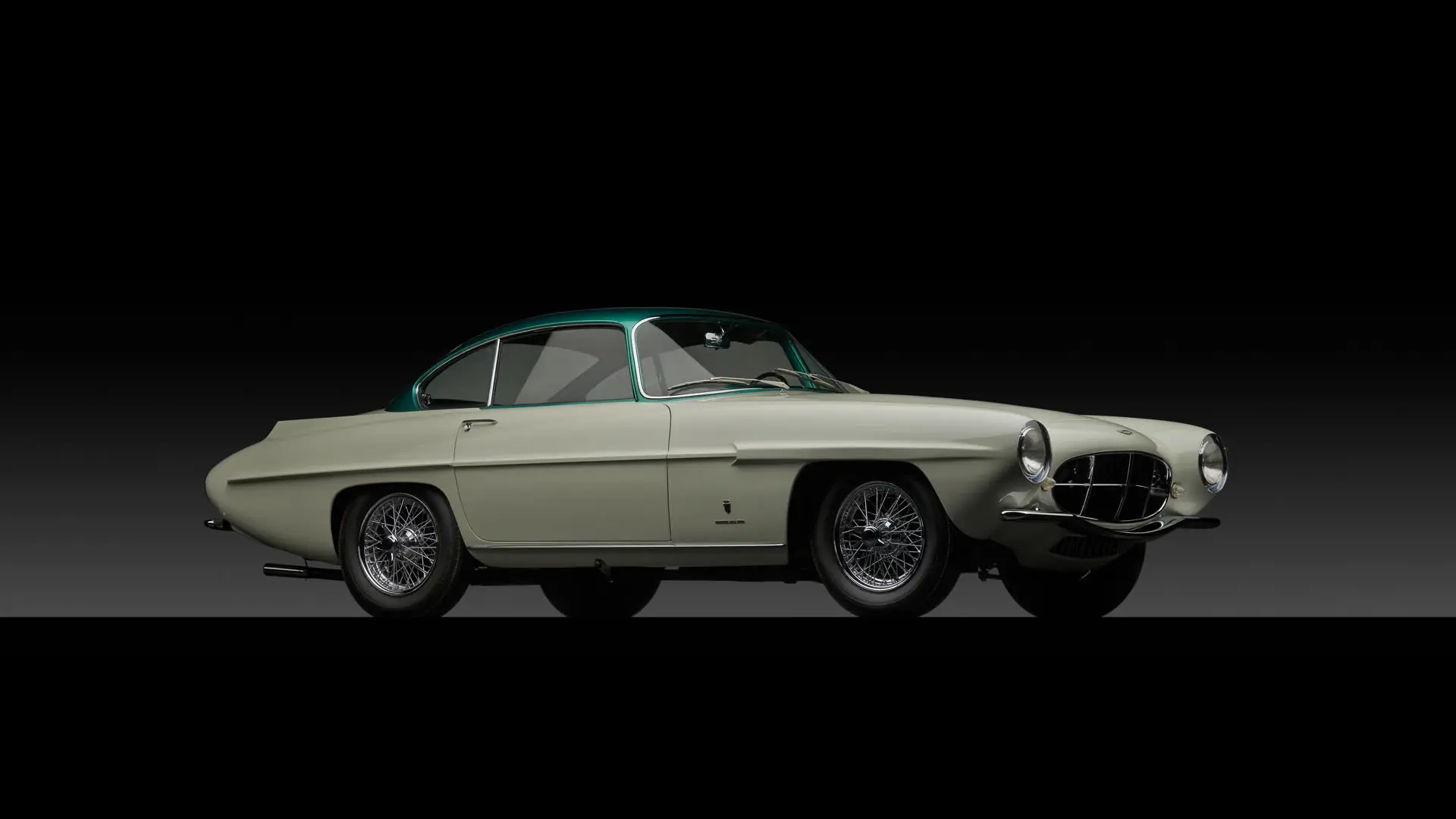
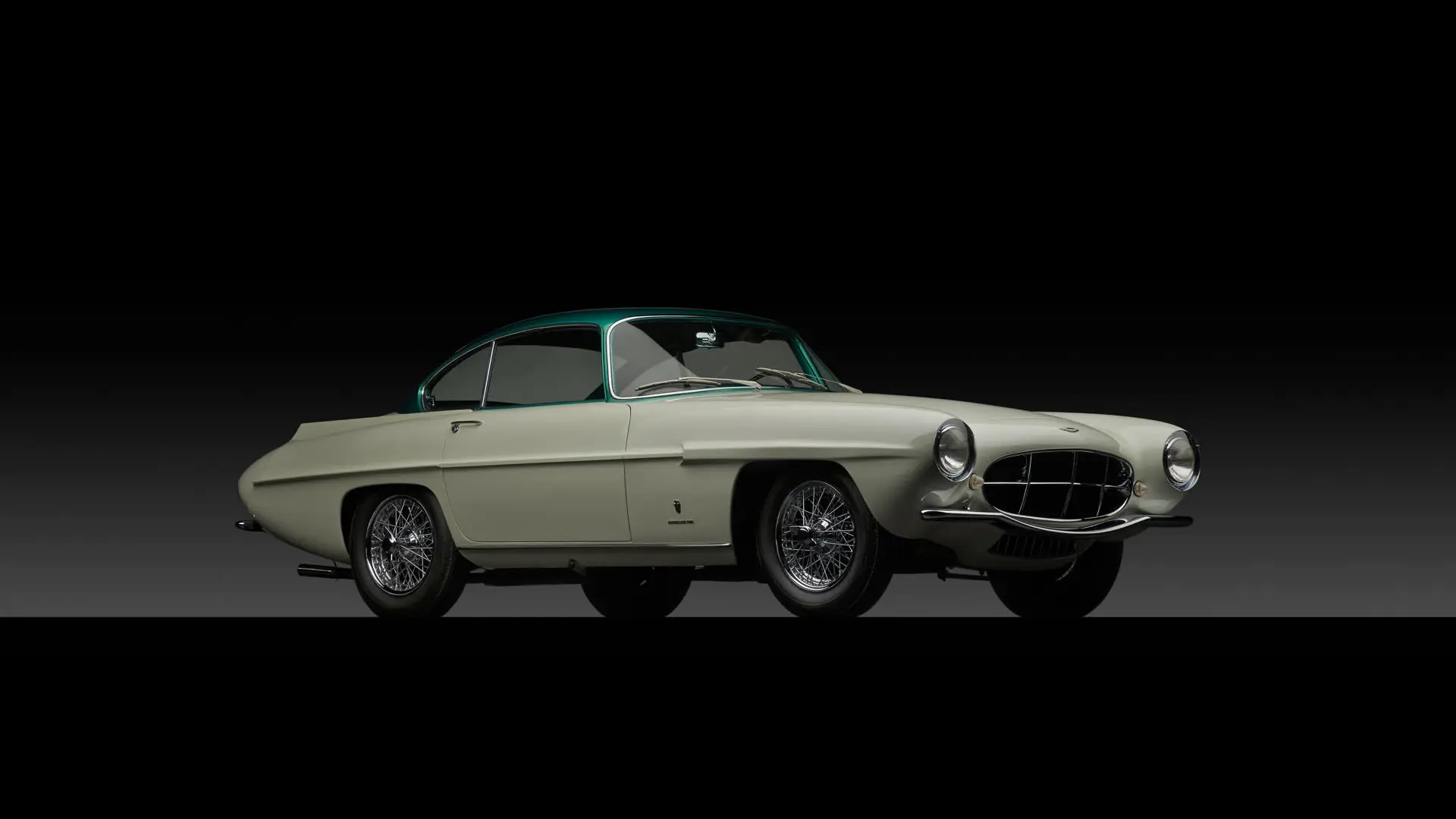
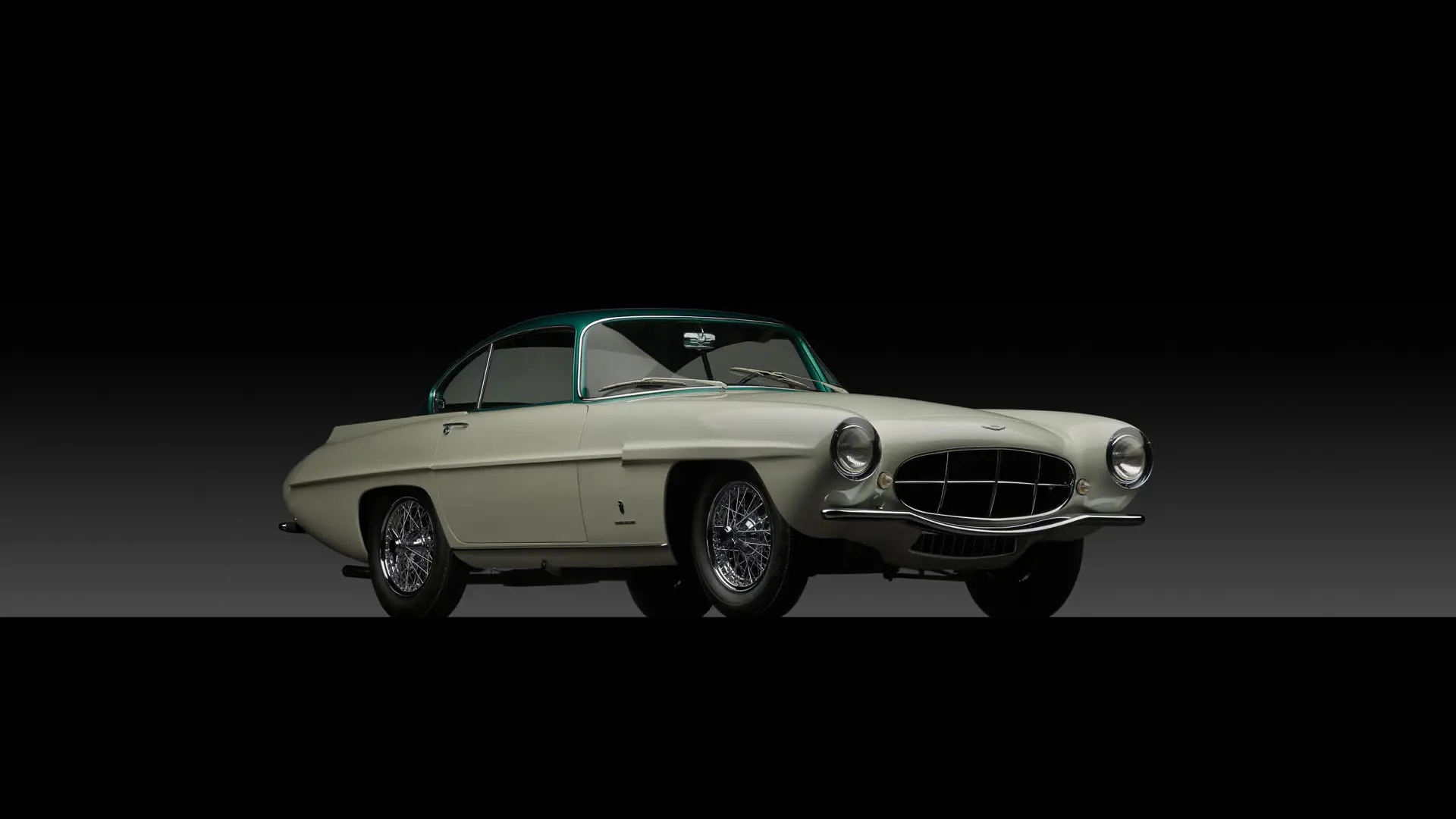
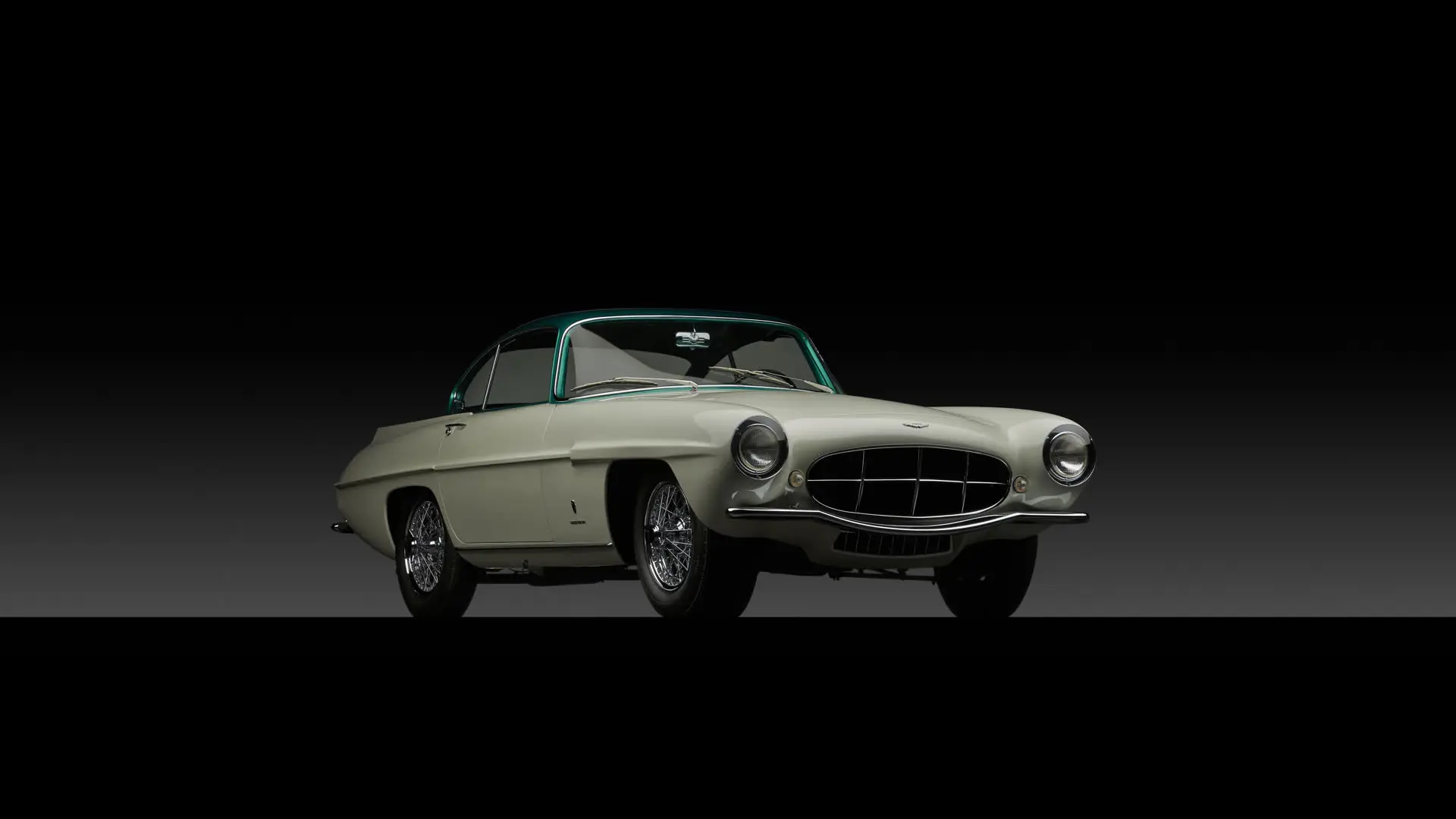
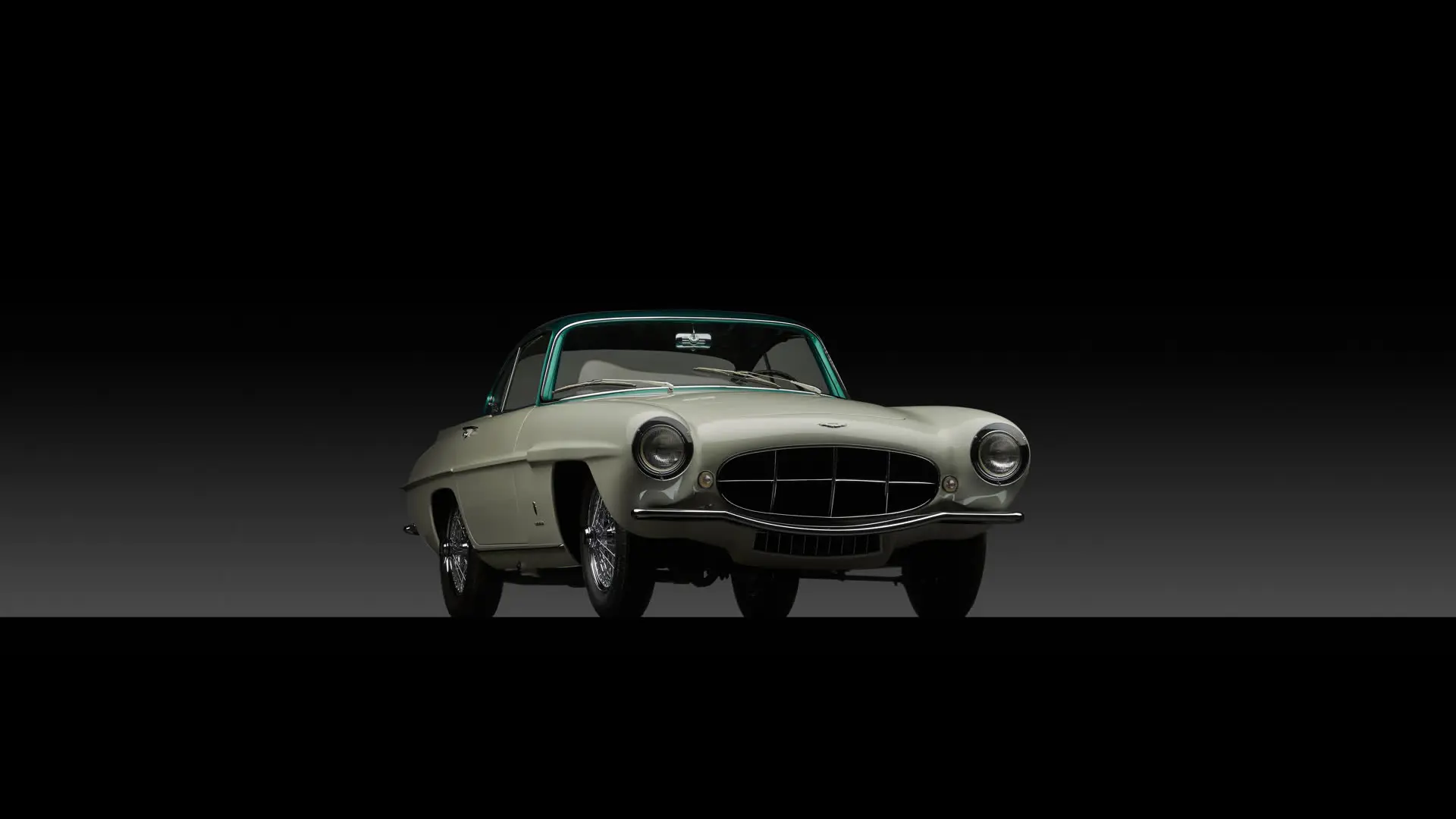
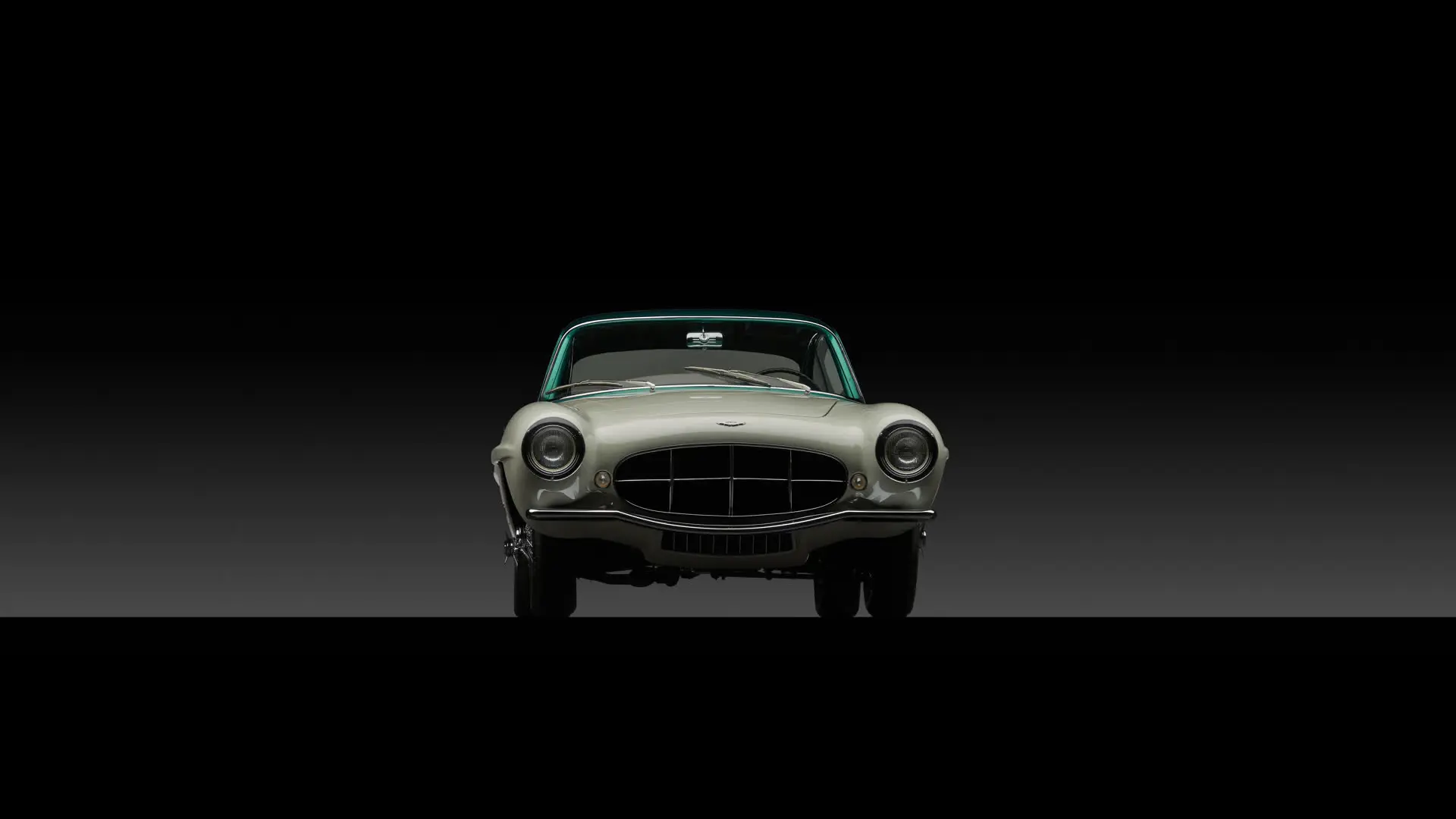
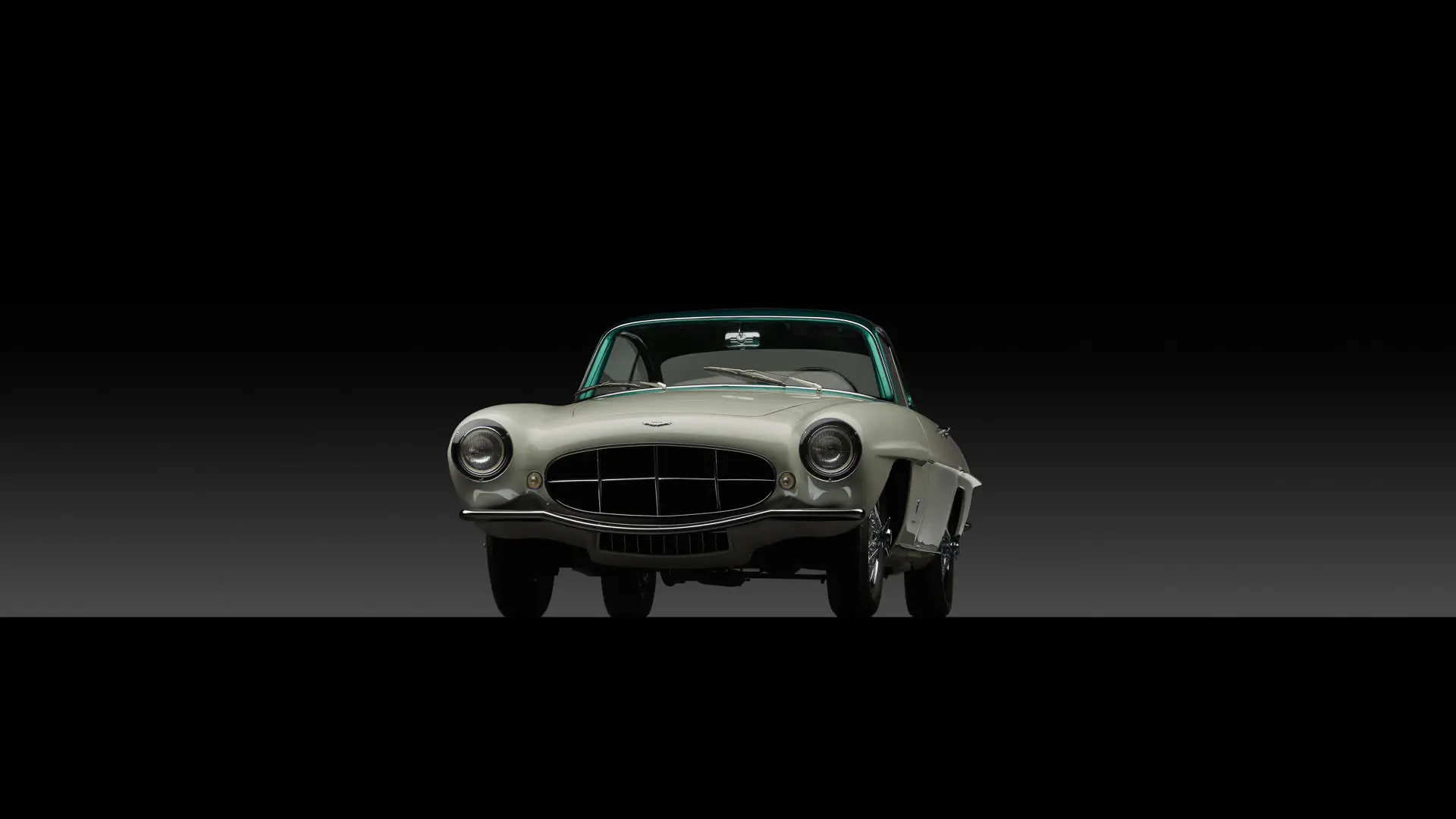
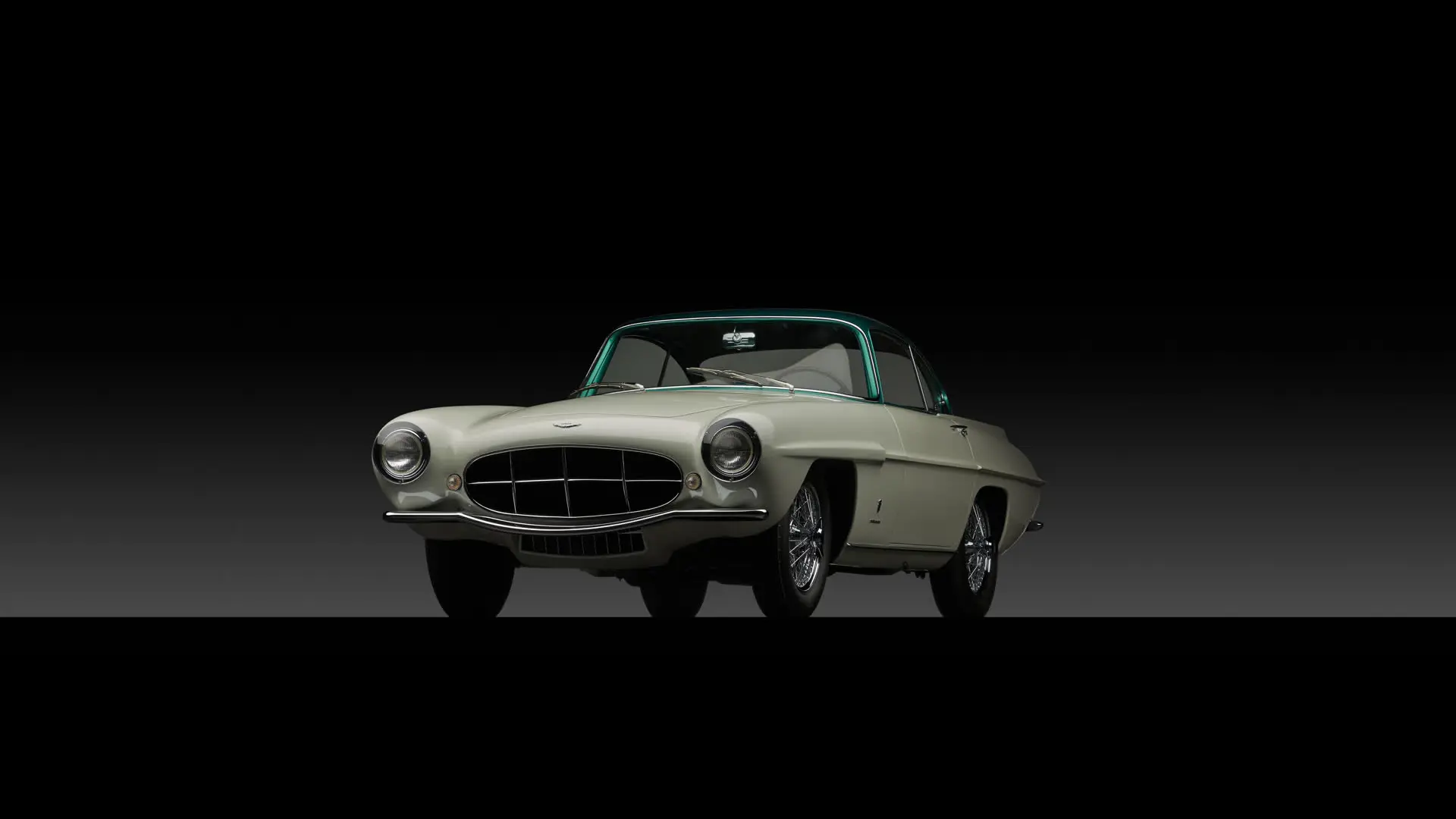
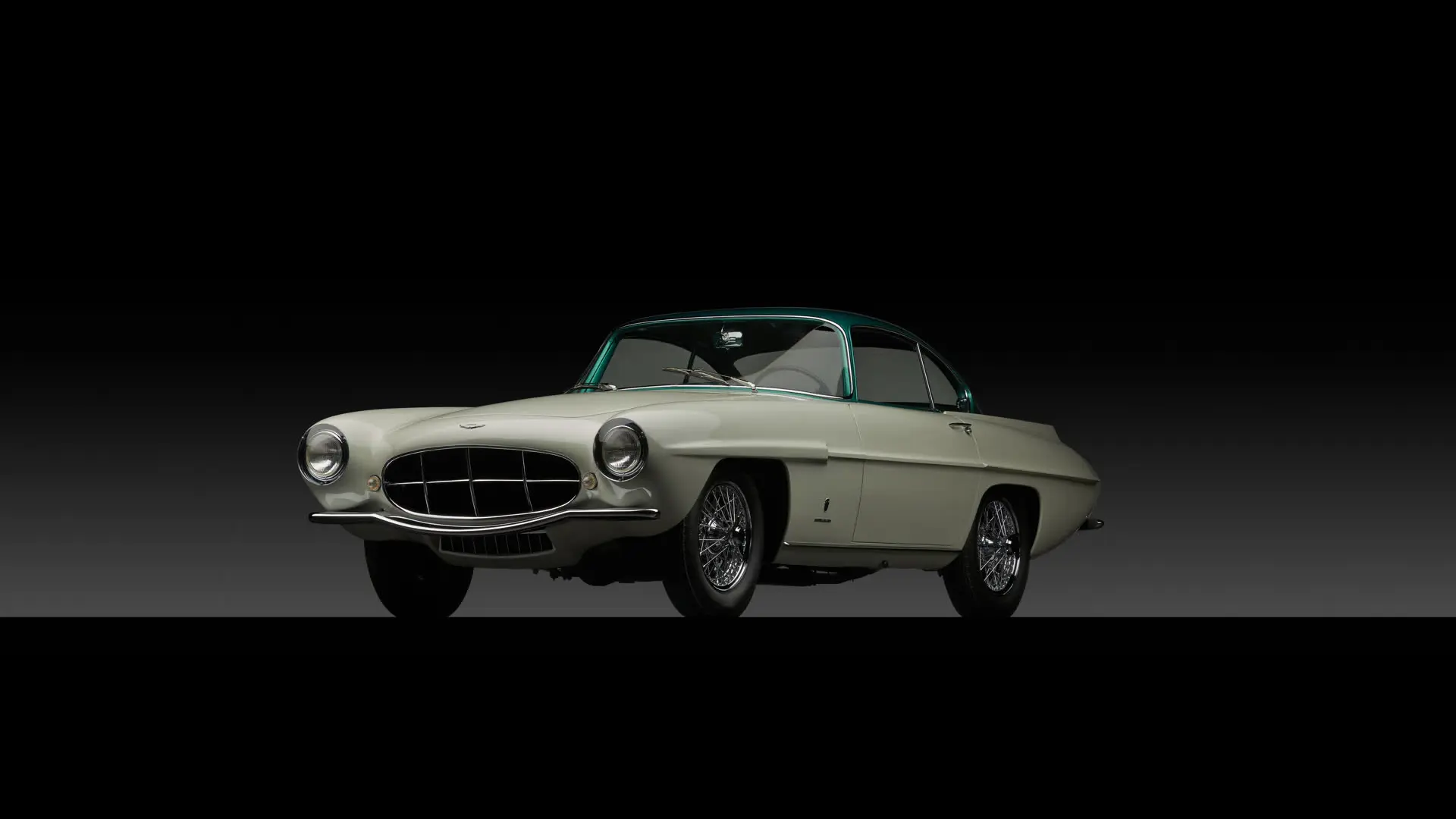

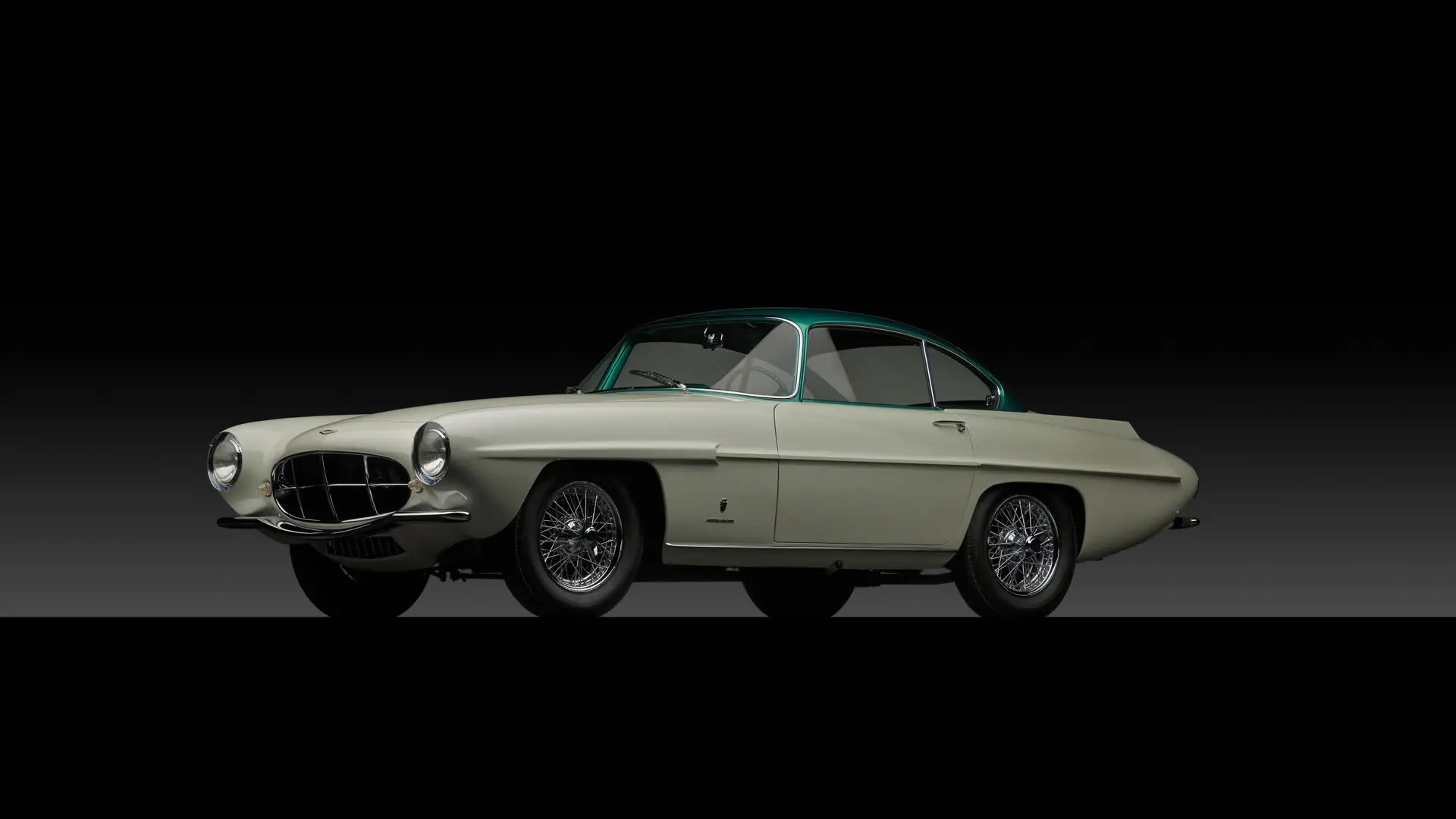
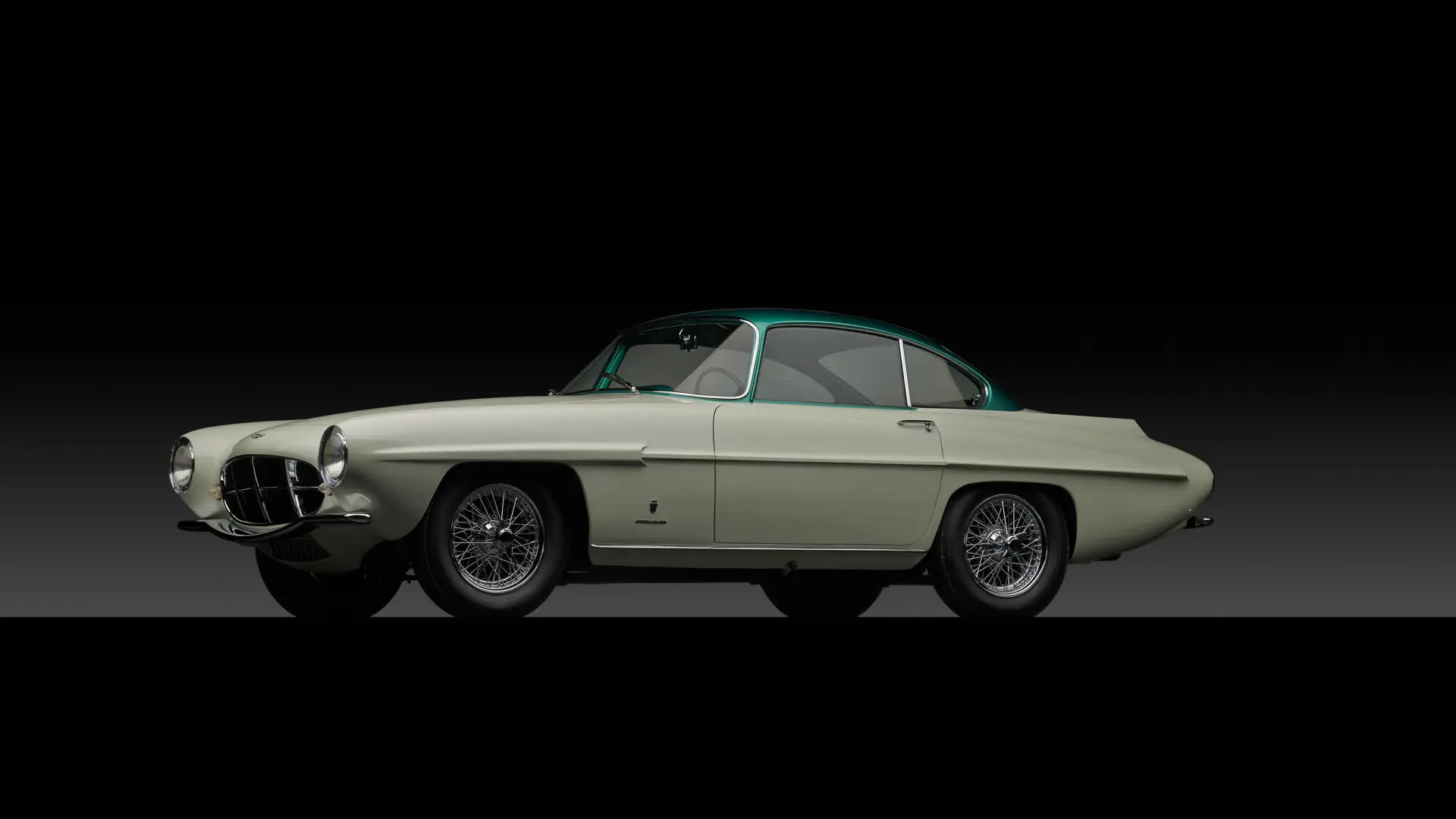

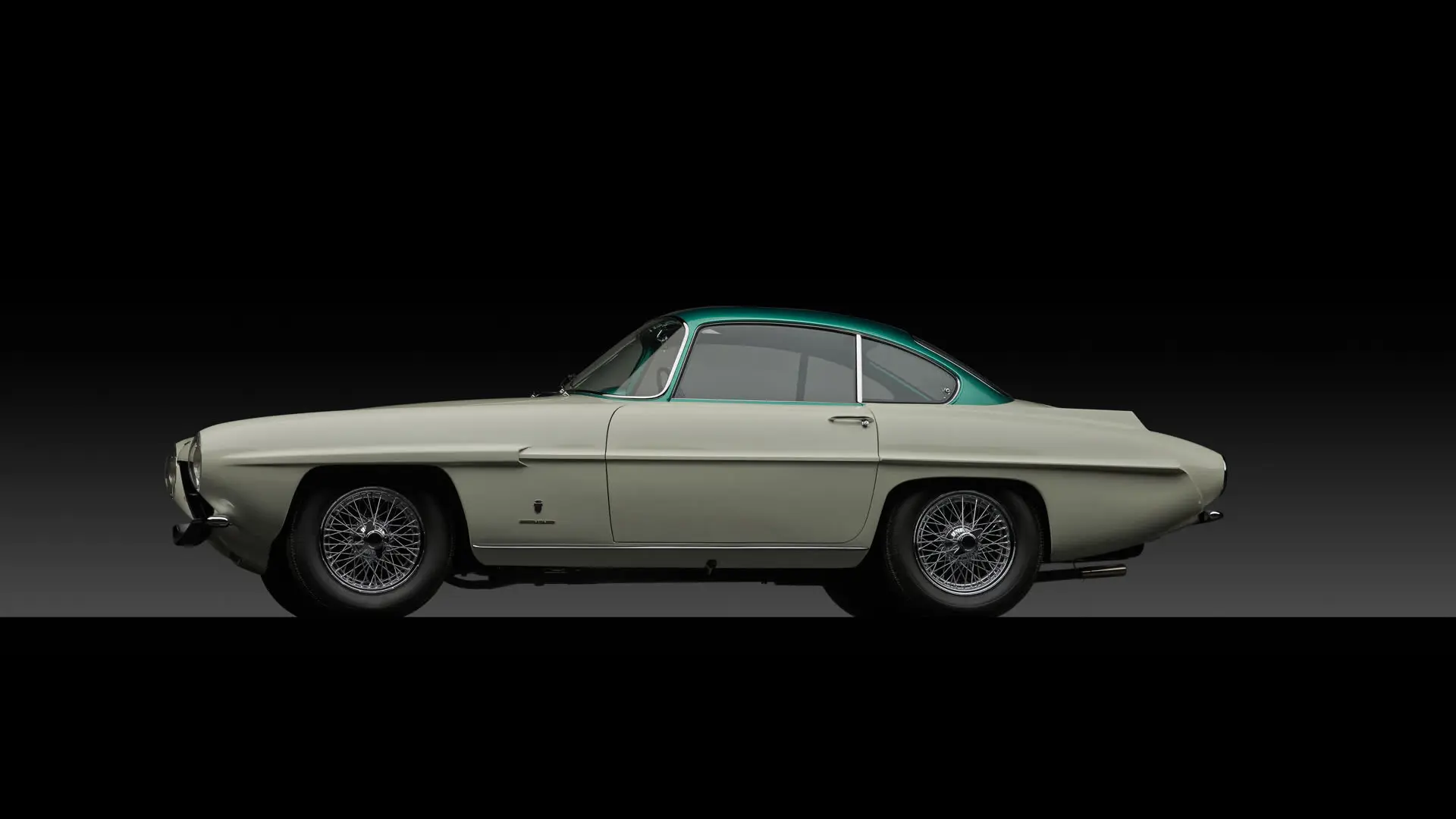
 | New York, New York
| New York, New York
